
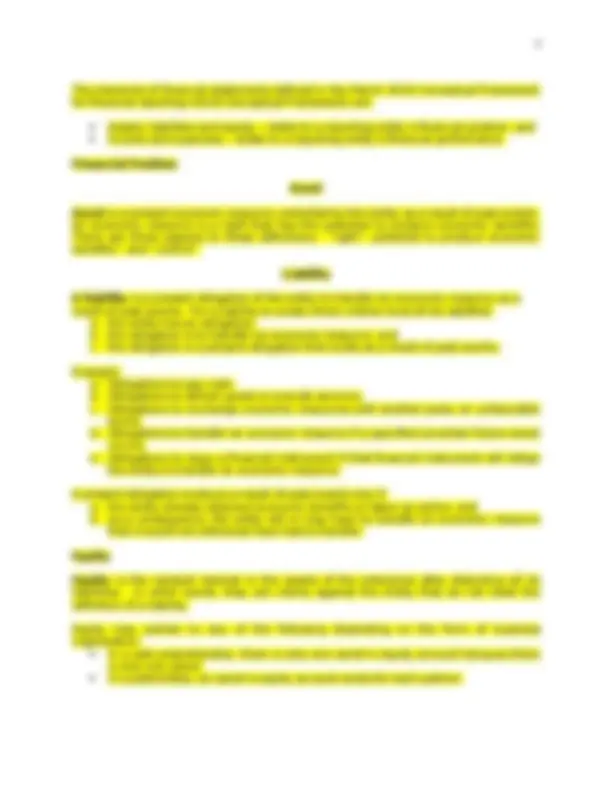
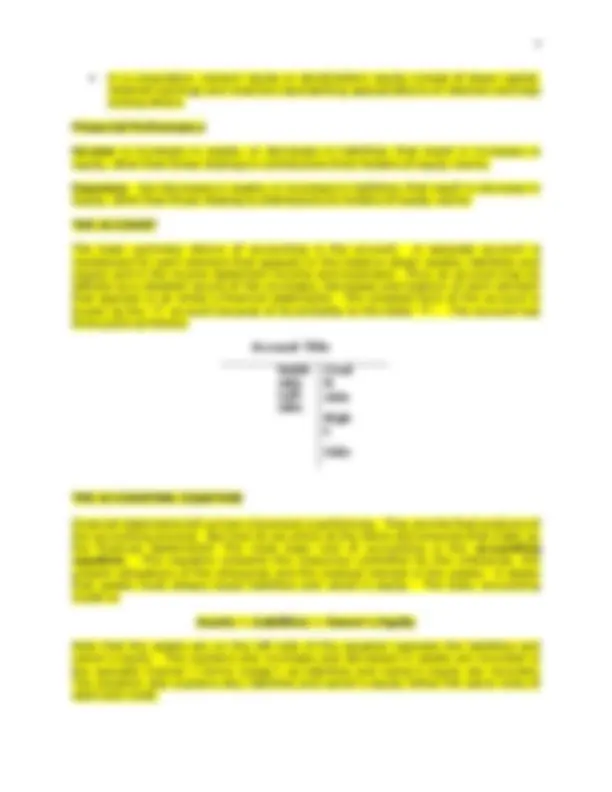
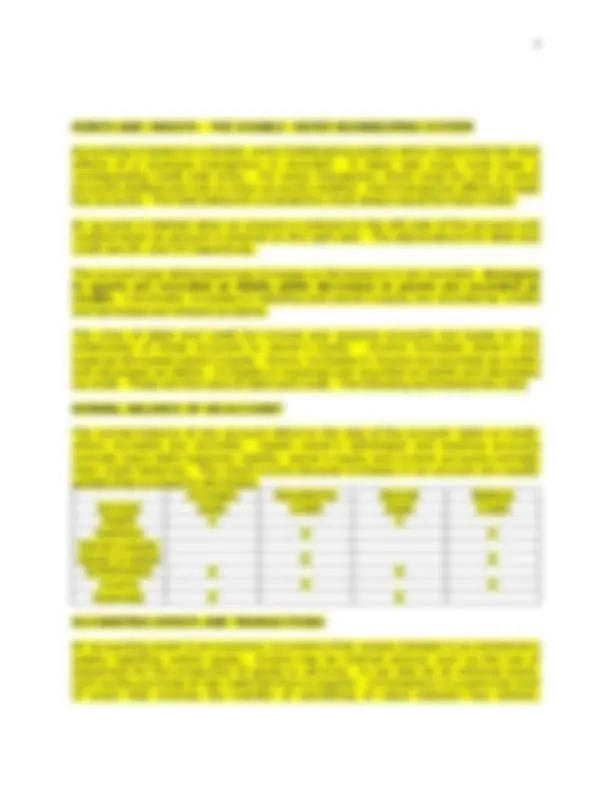
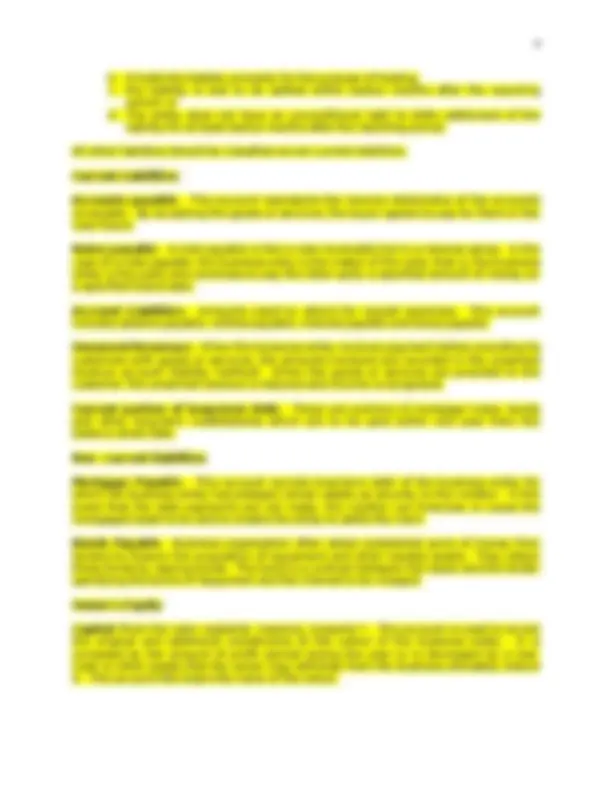
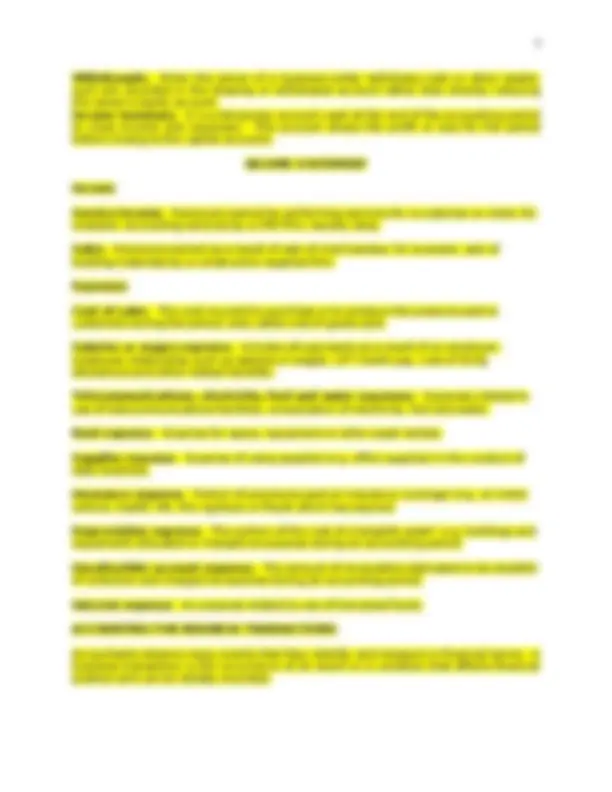
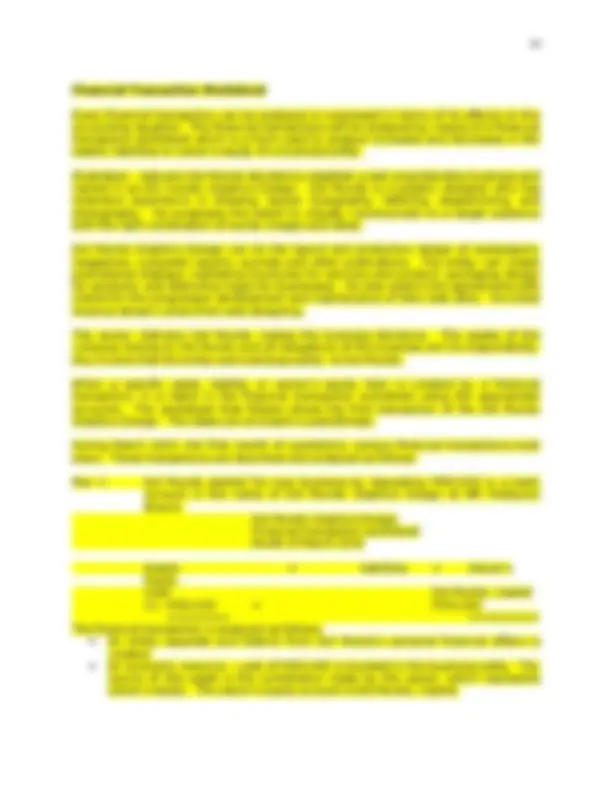
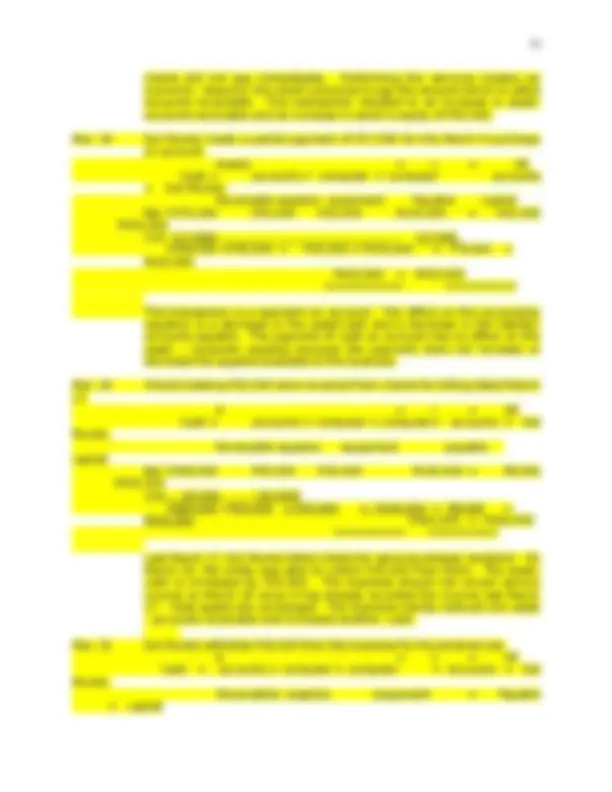
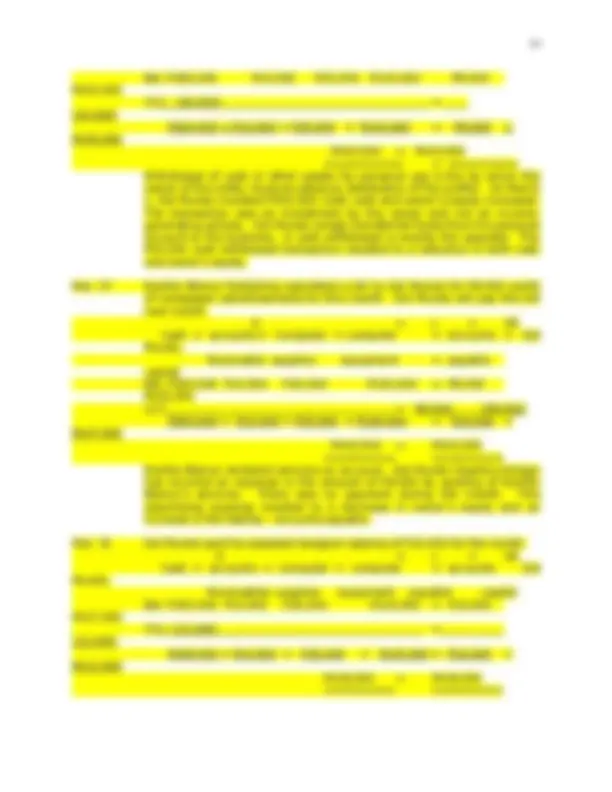
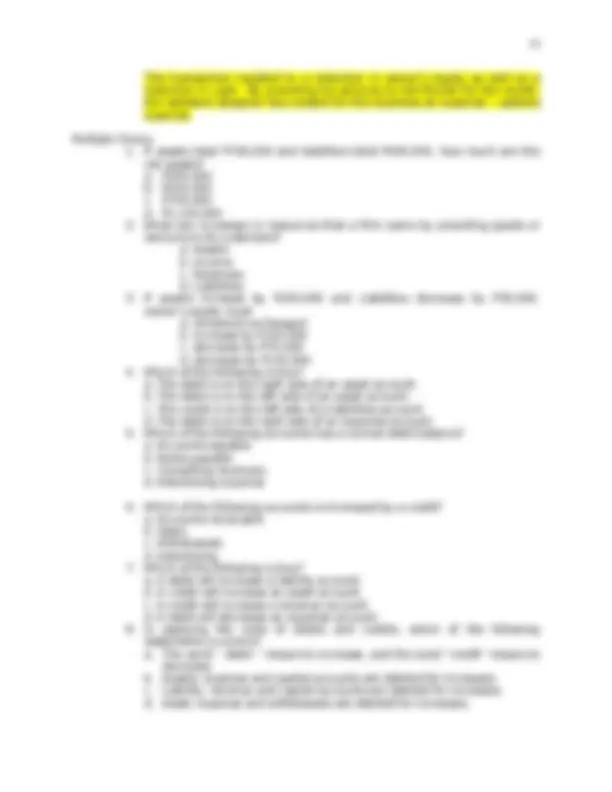
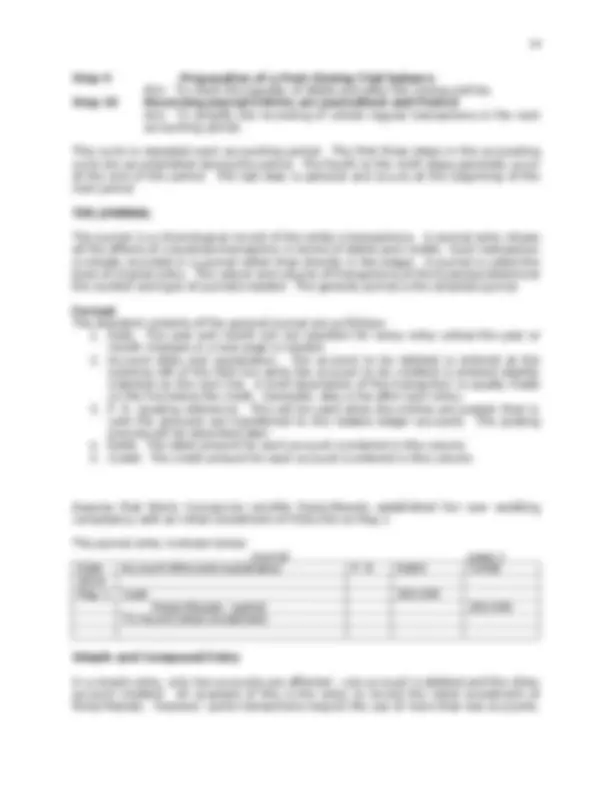
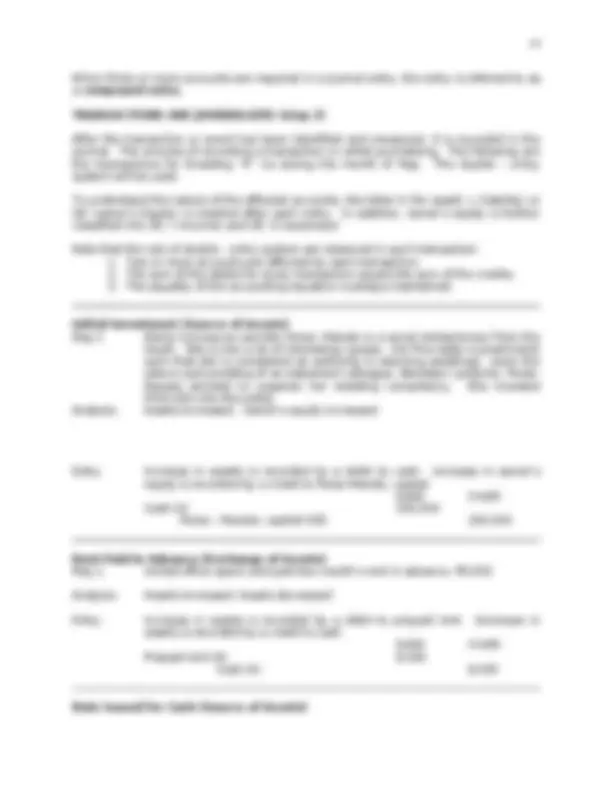
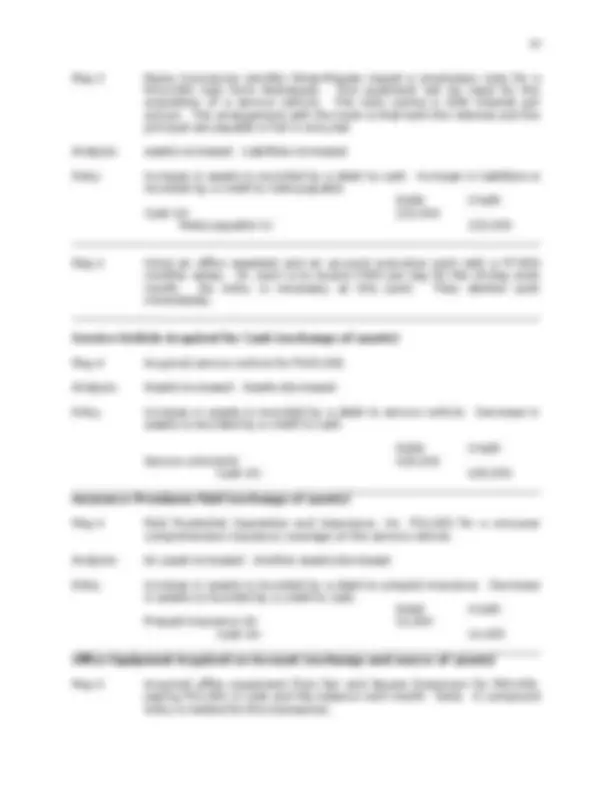
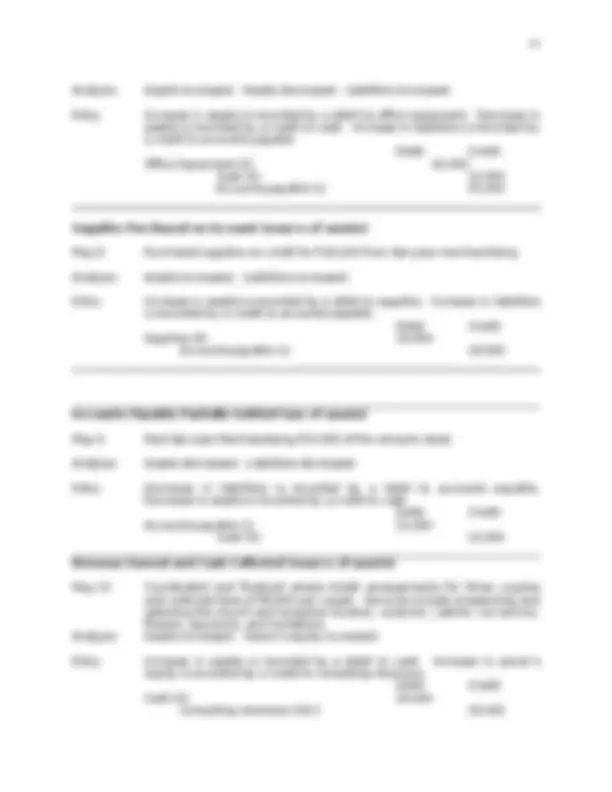
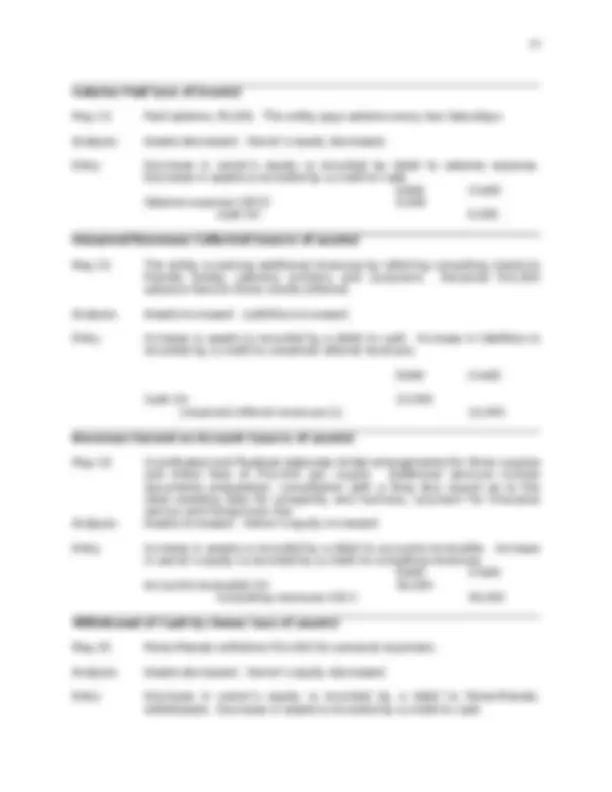
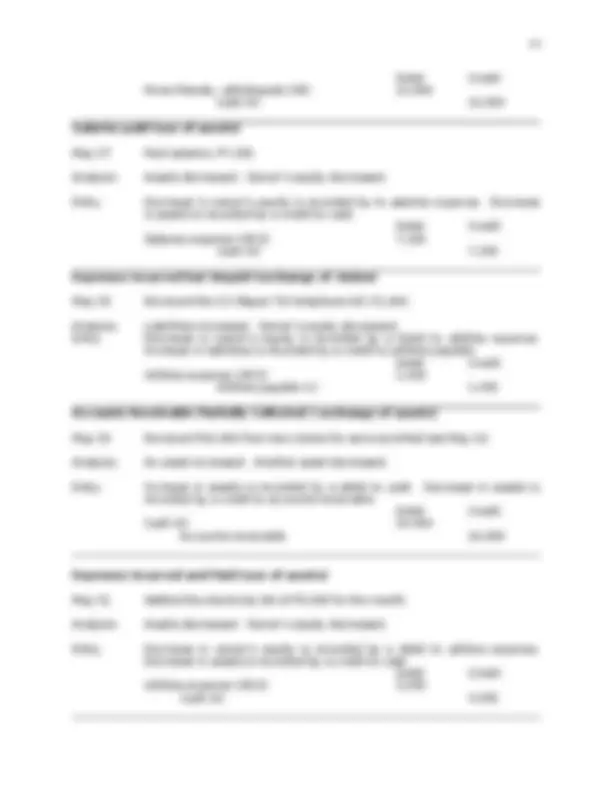
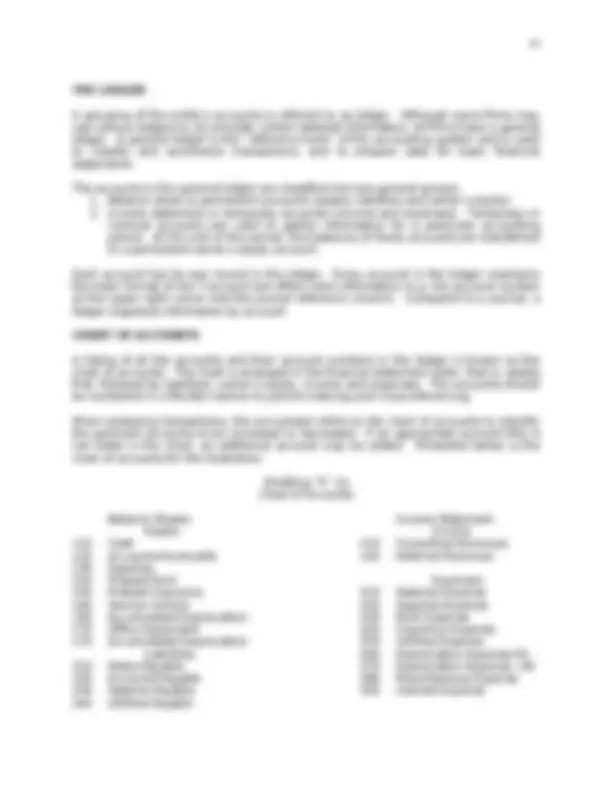
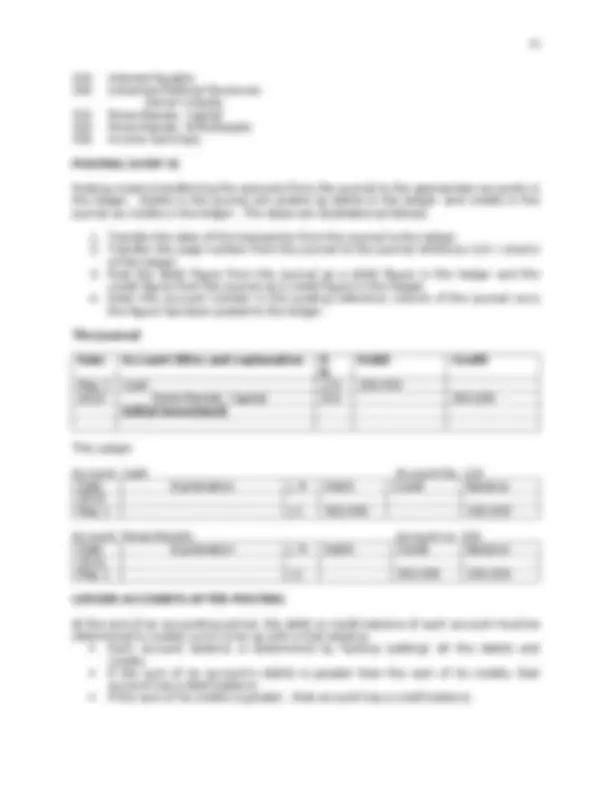
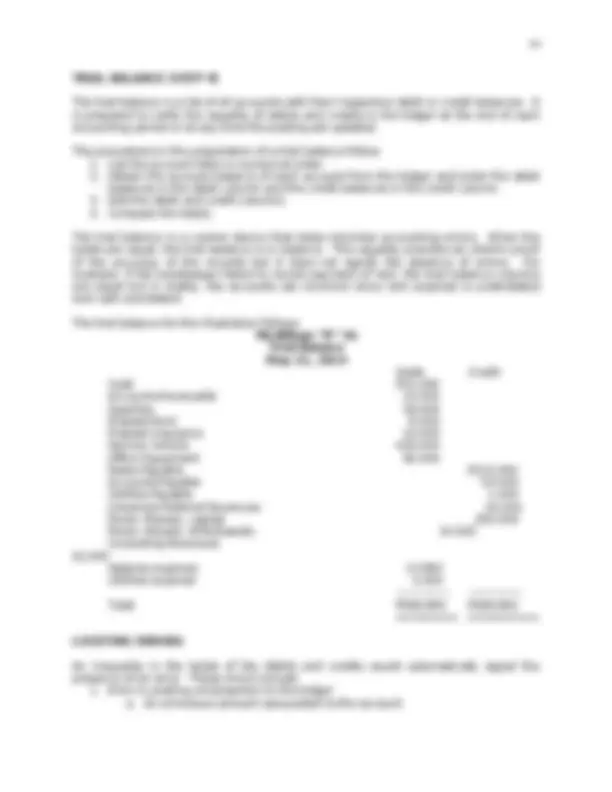
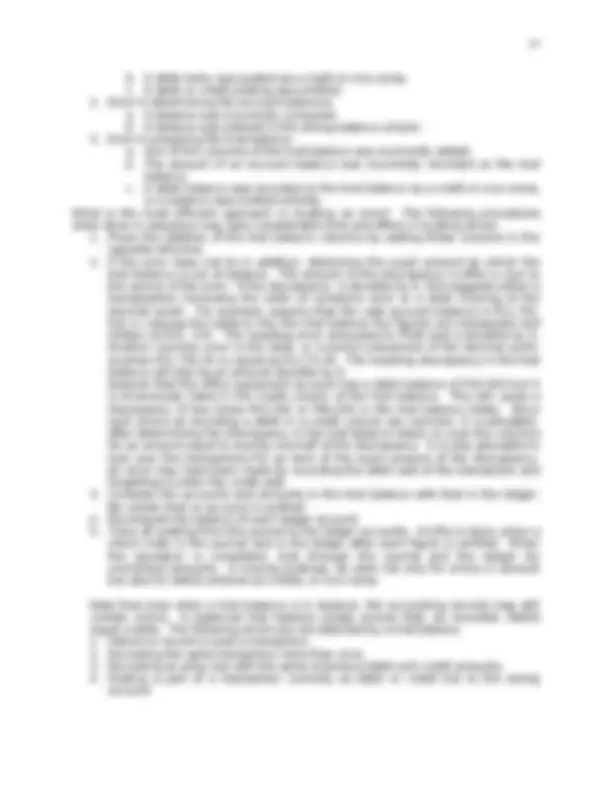
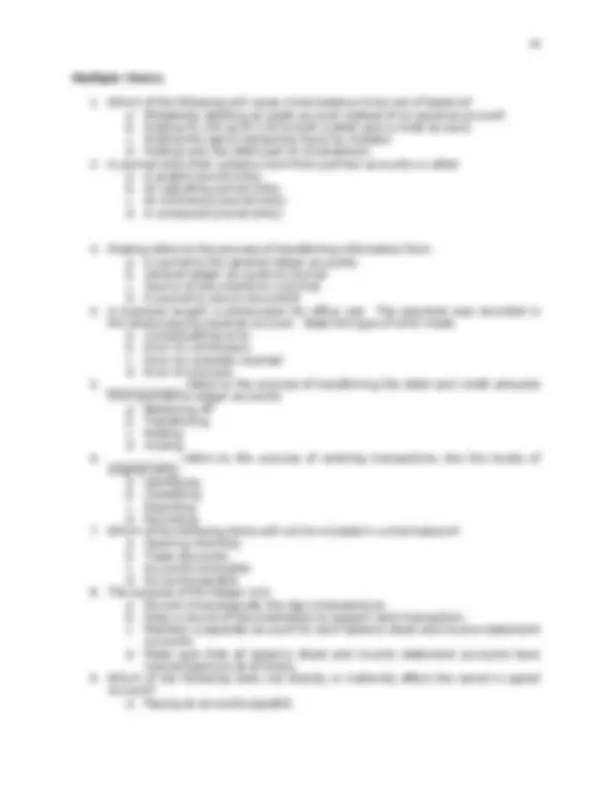
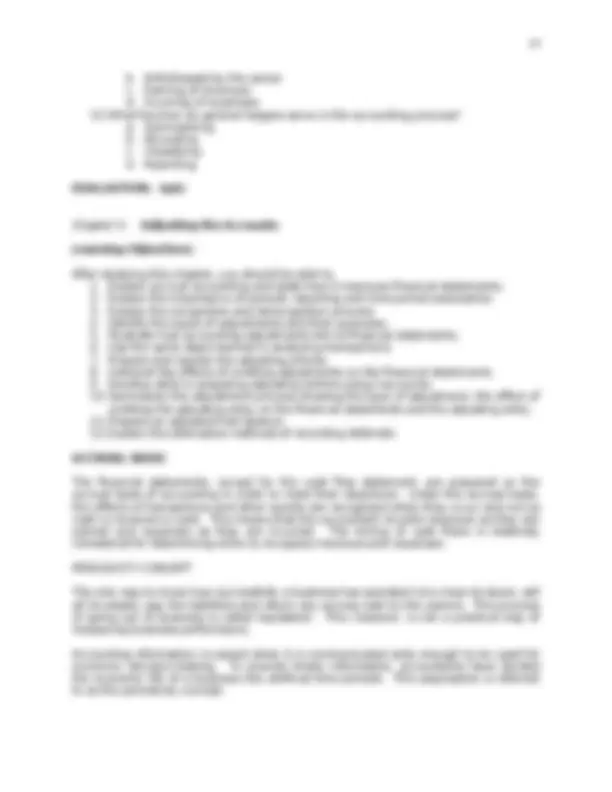
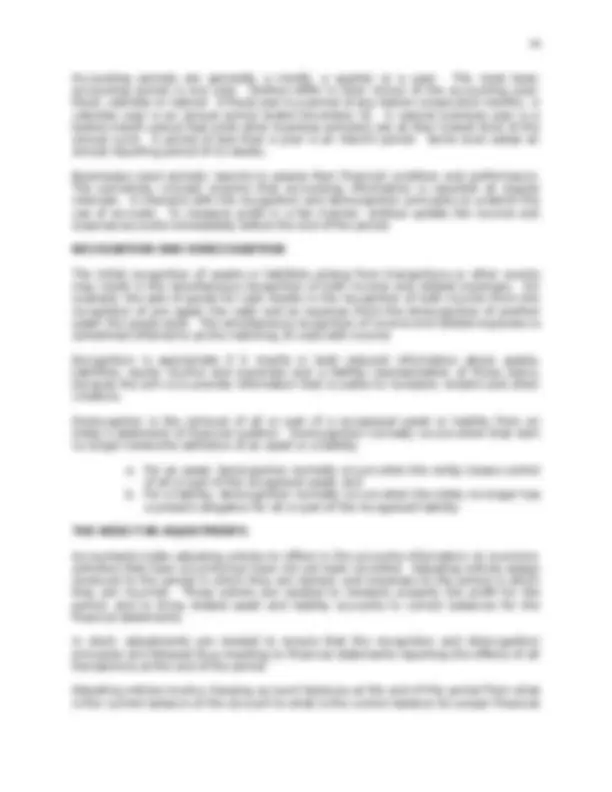
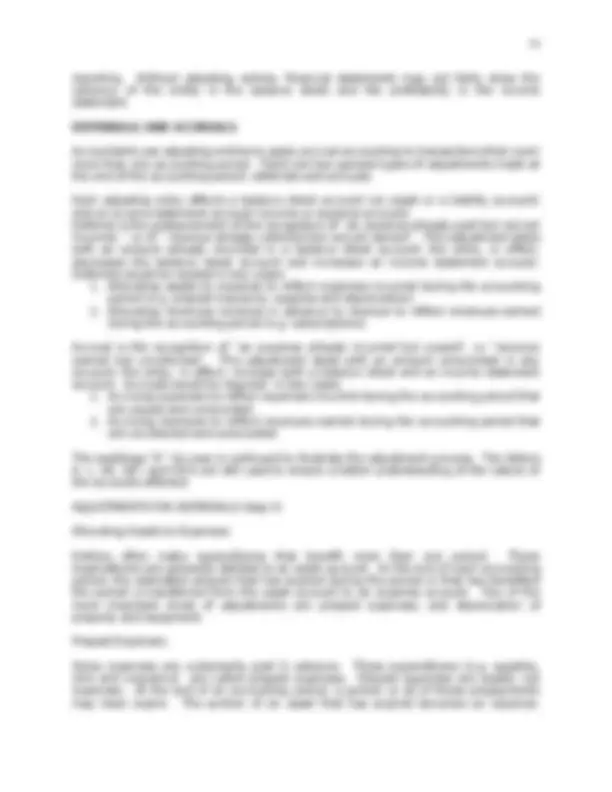
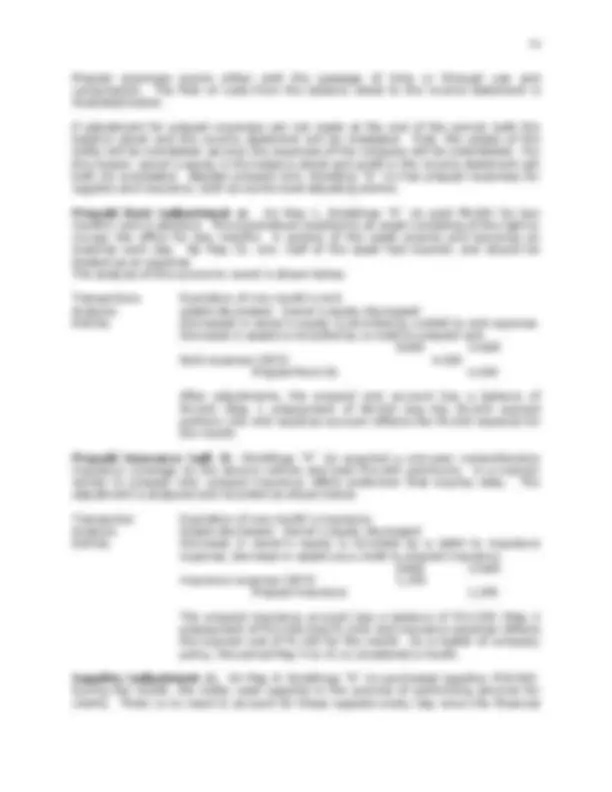
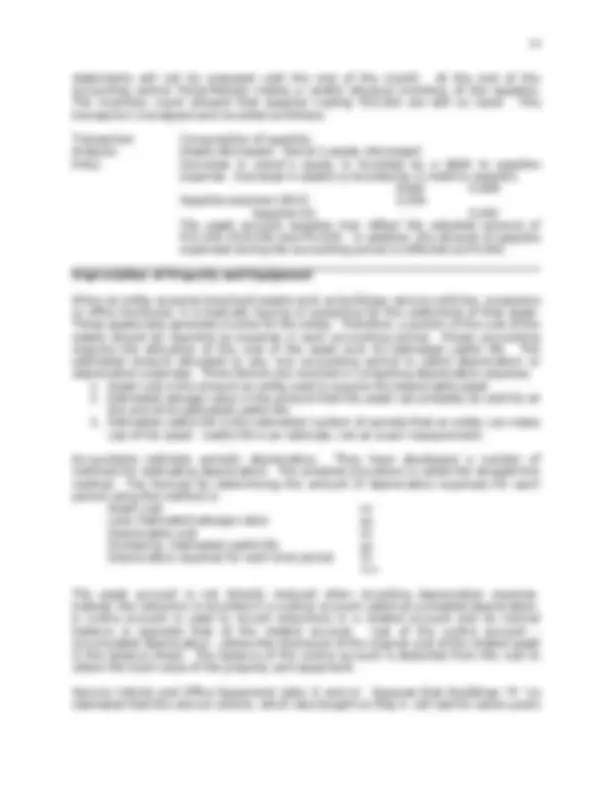
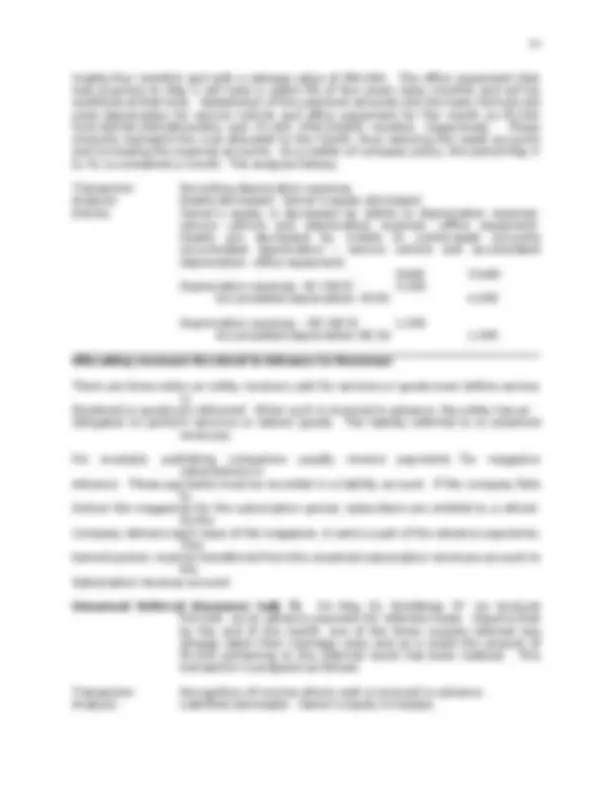
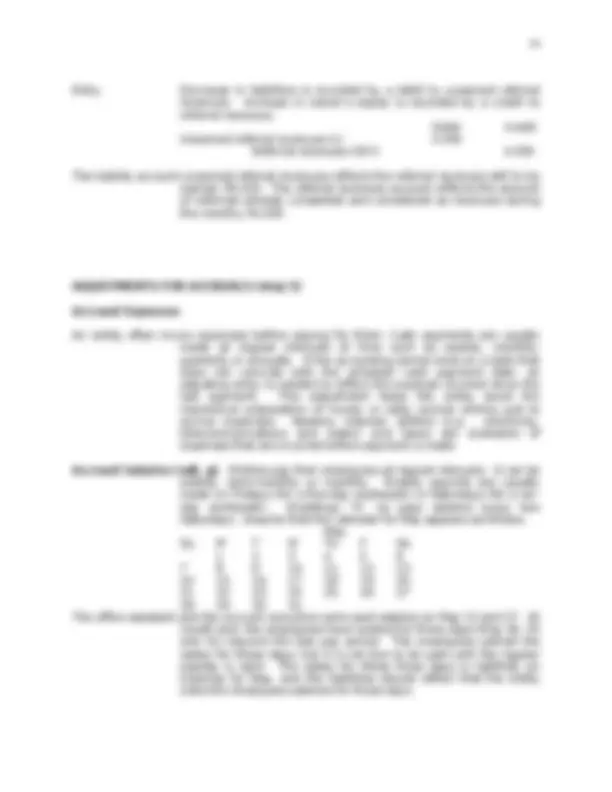
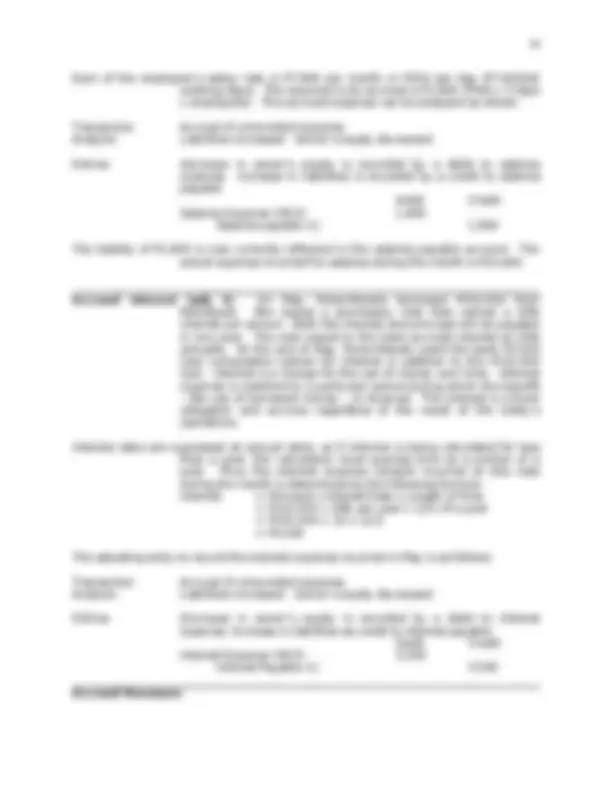
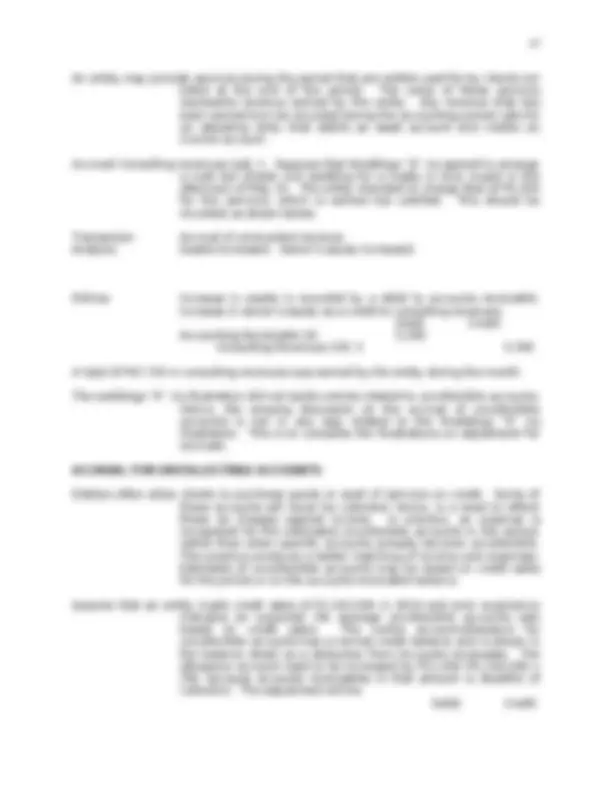
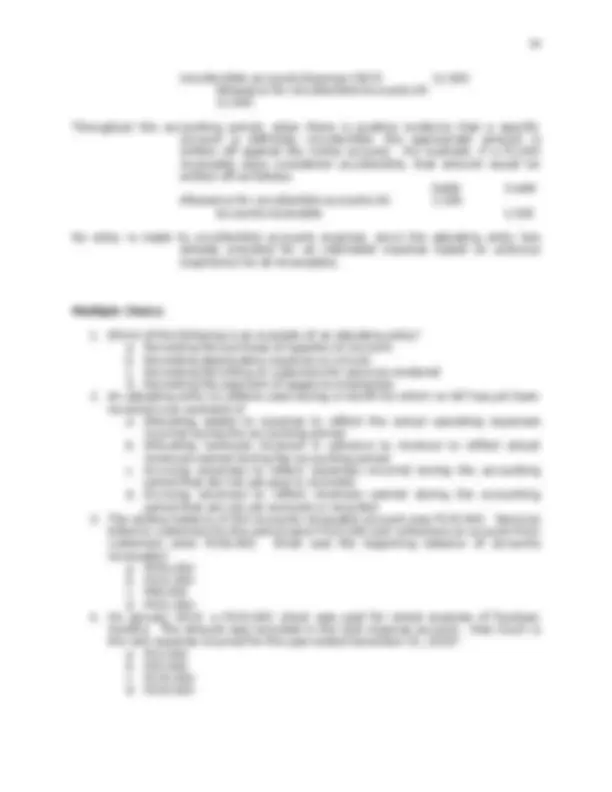
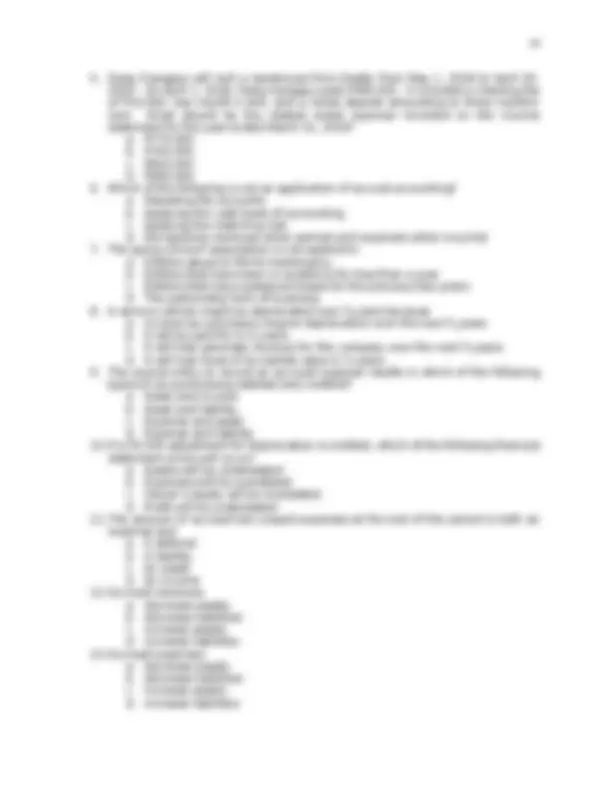
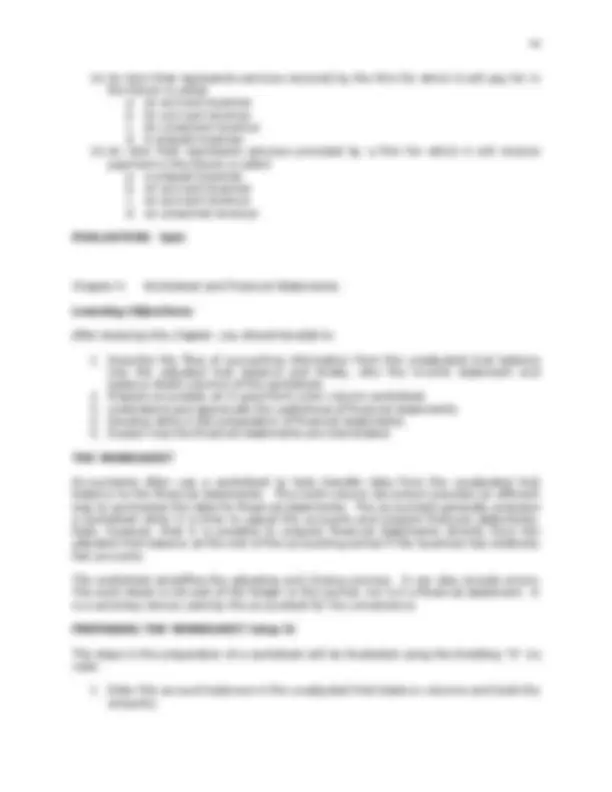
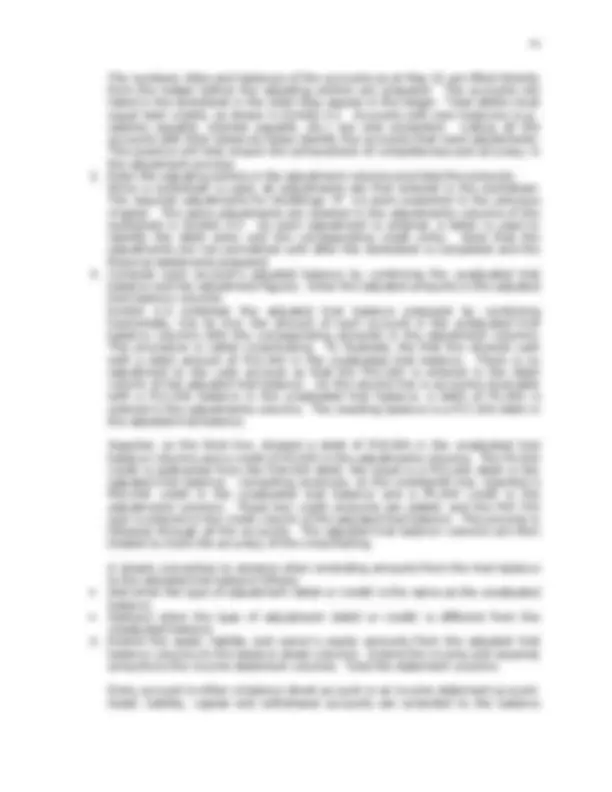
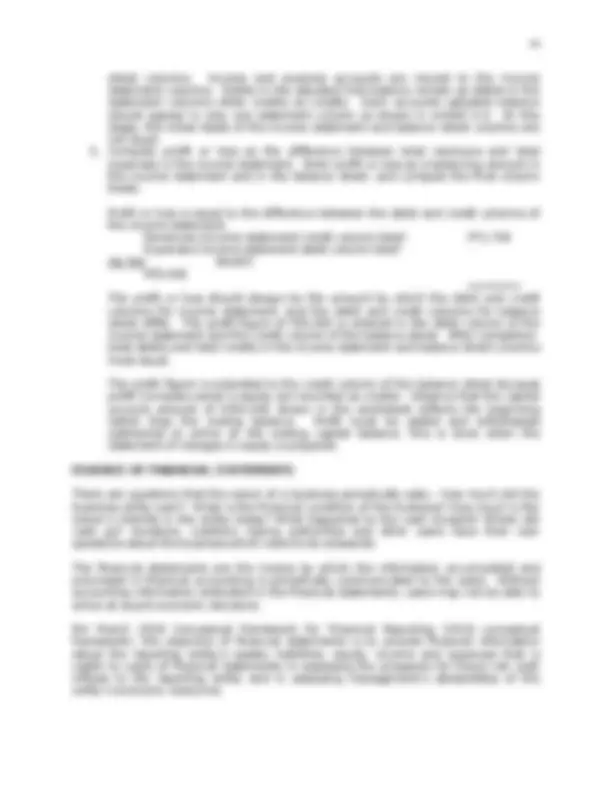
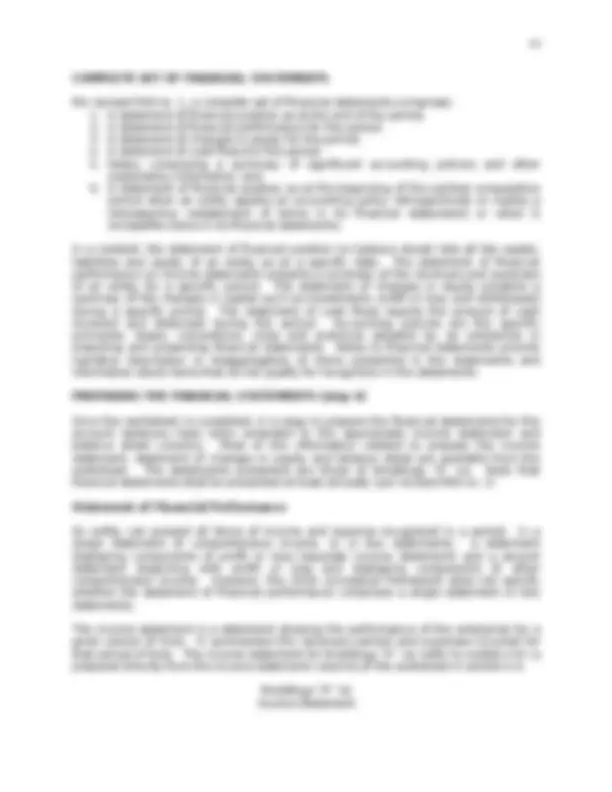
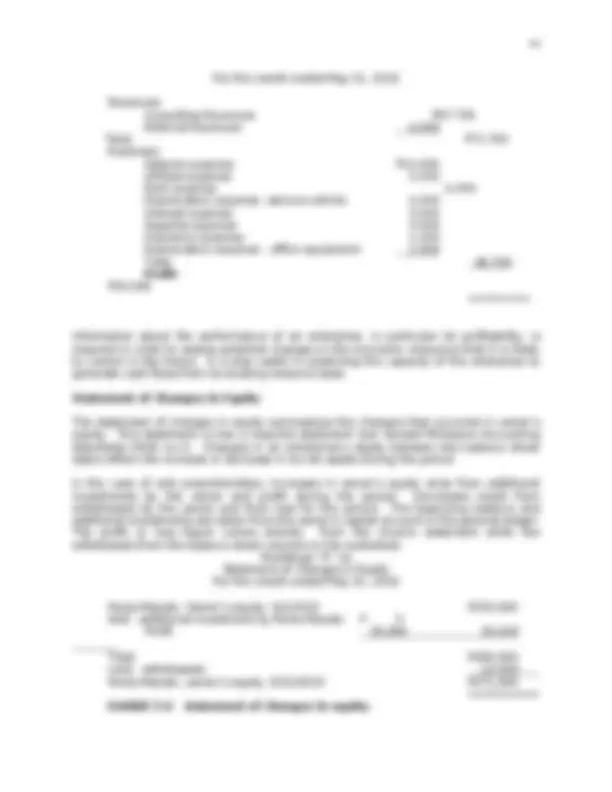
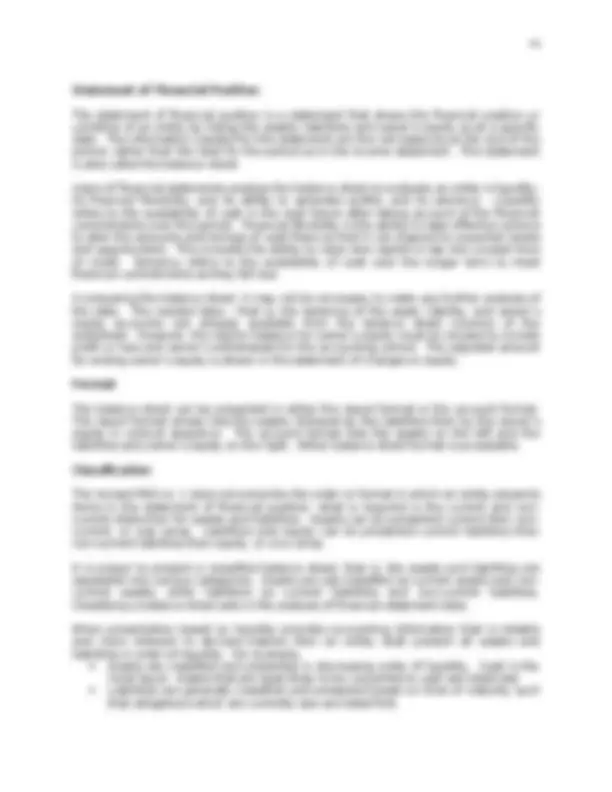
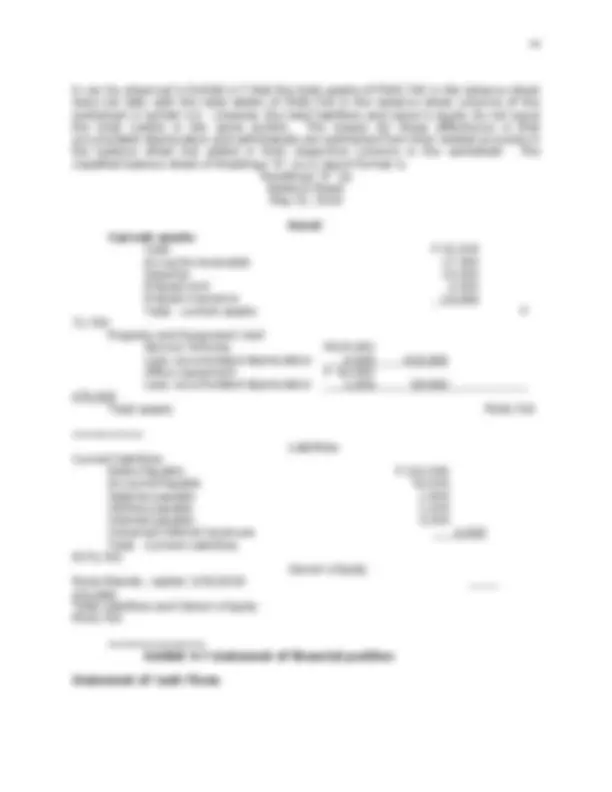
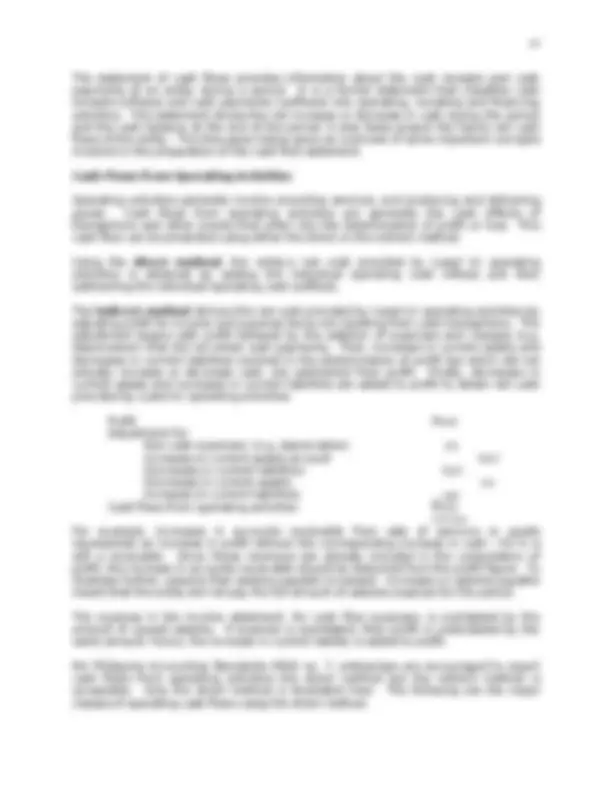
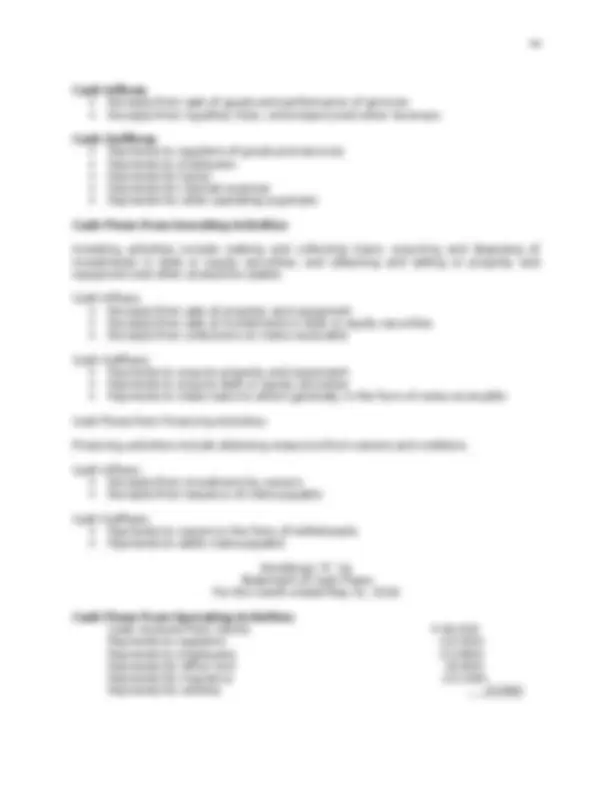
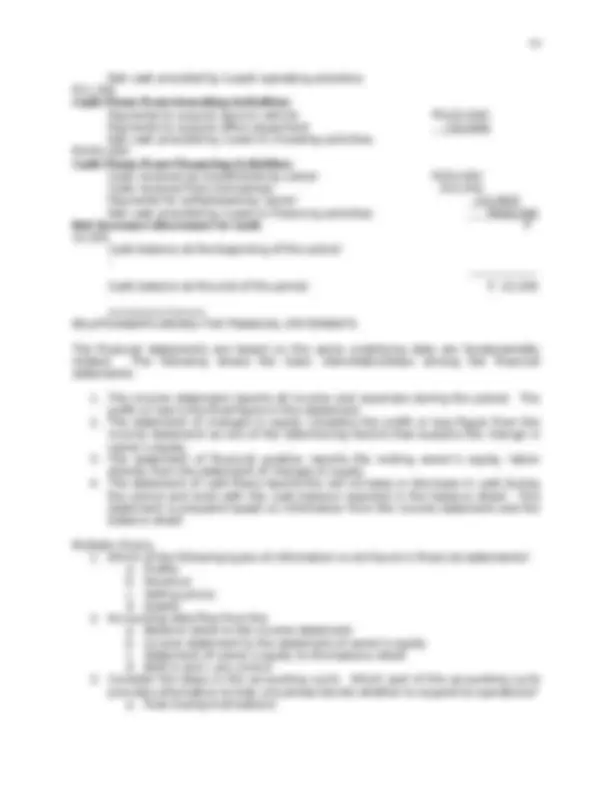
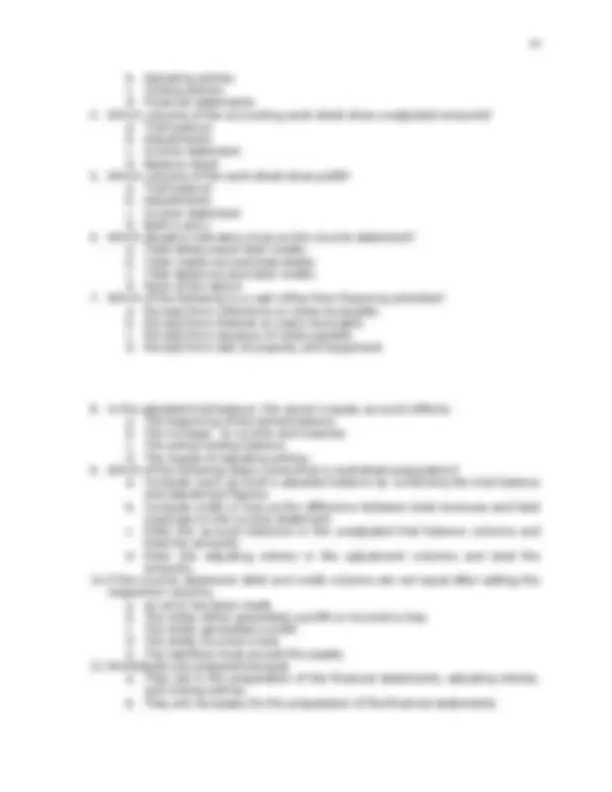
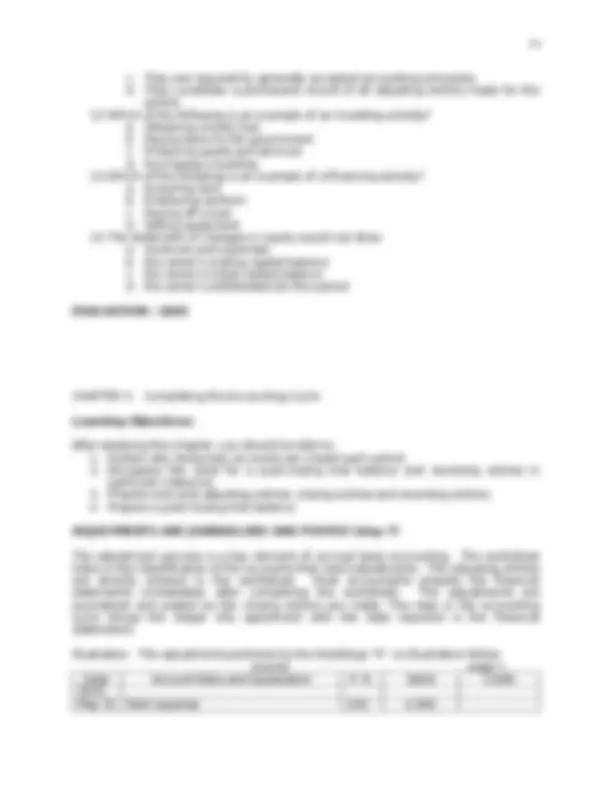
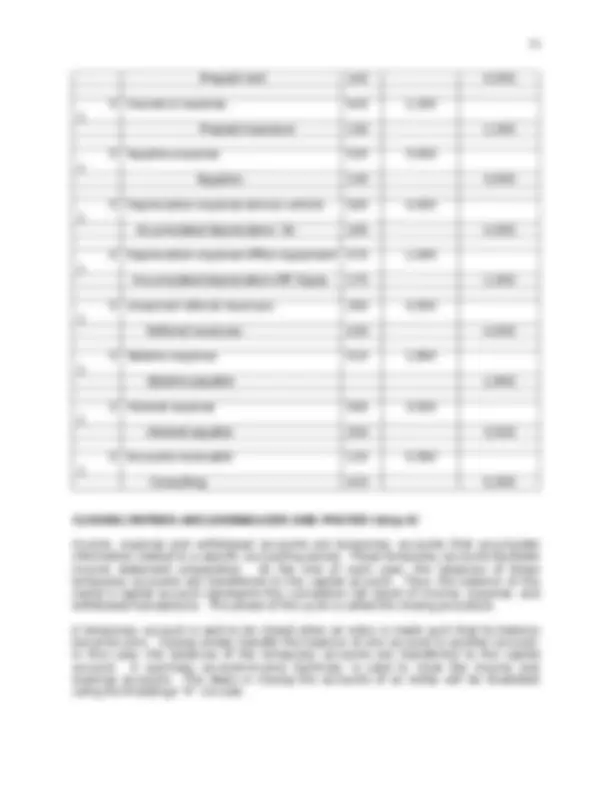
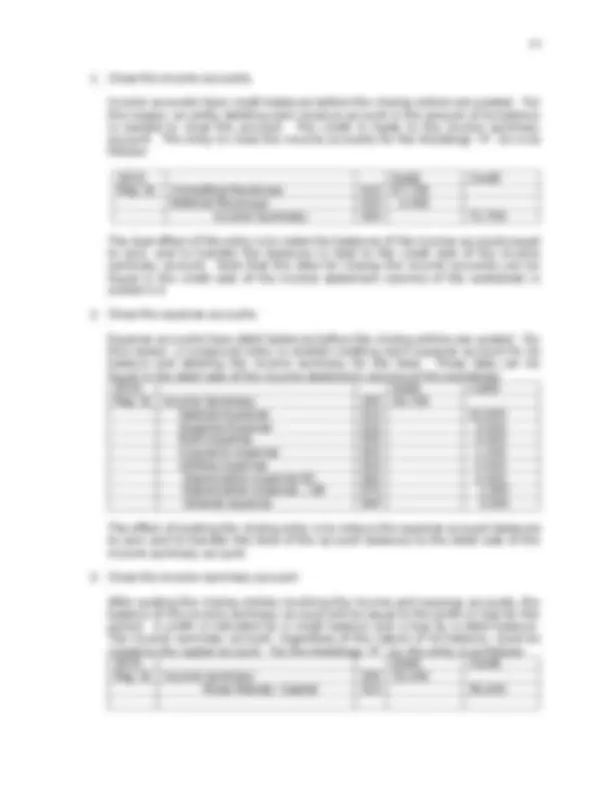
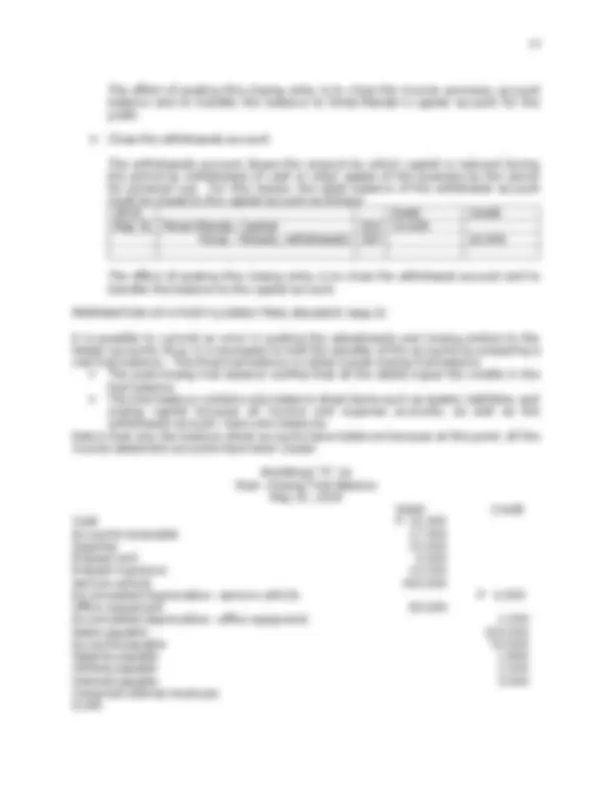
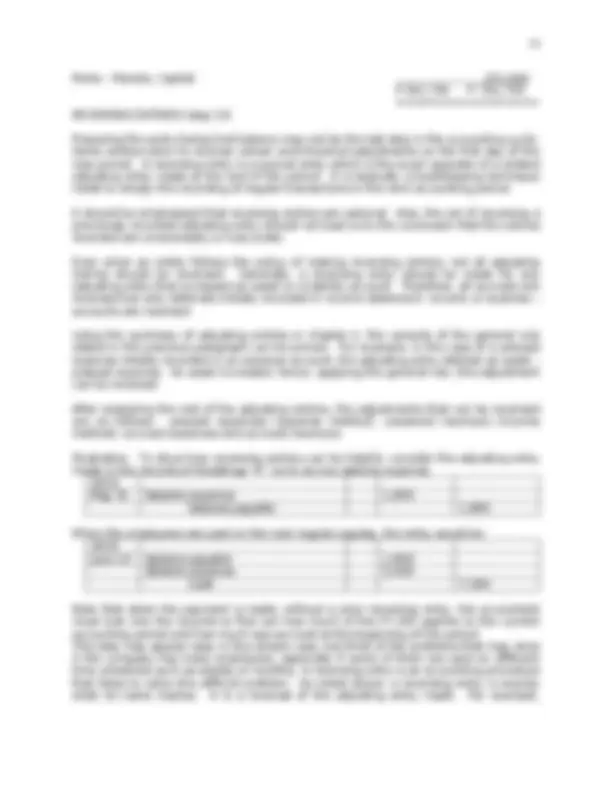
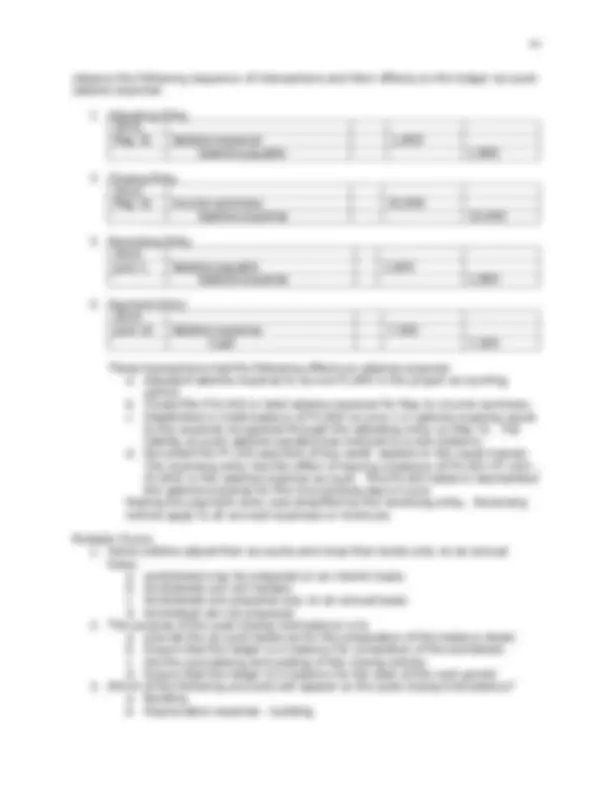

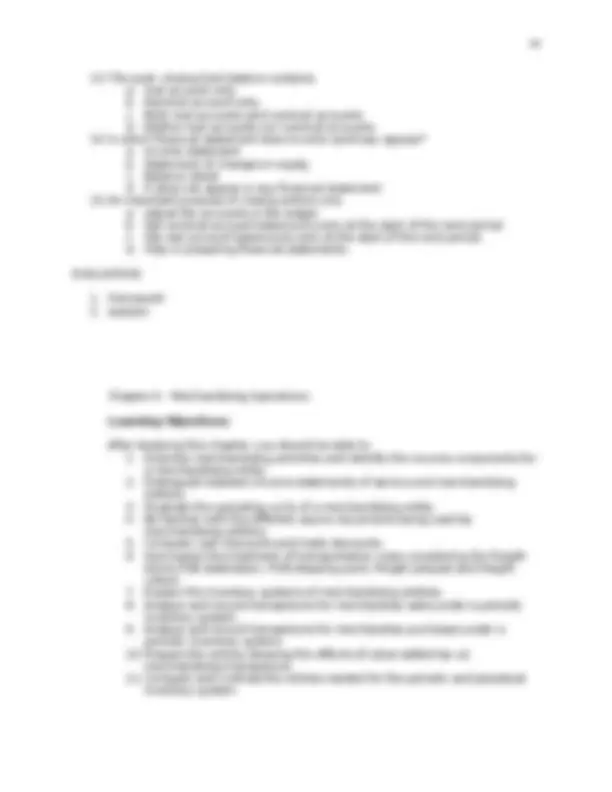
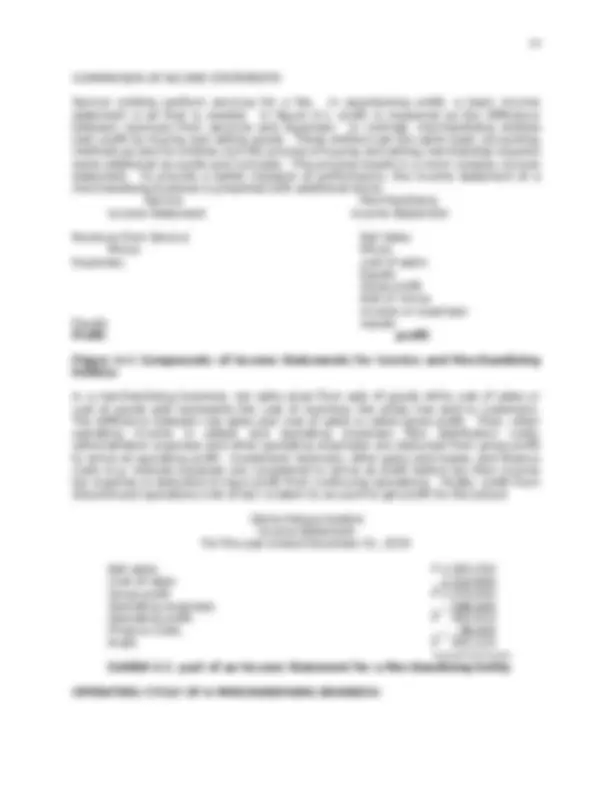
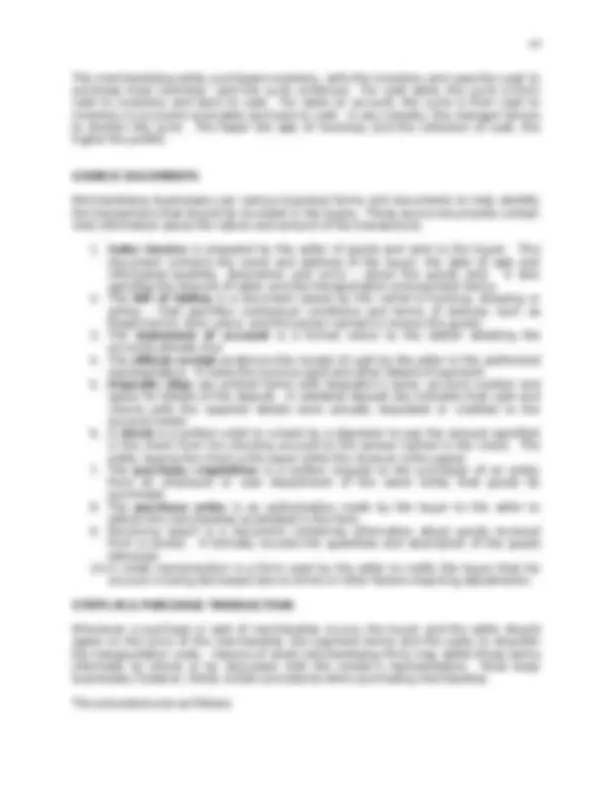
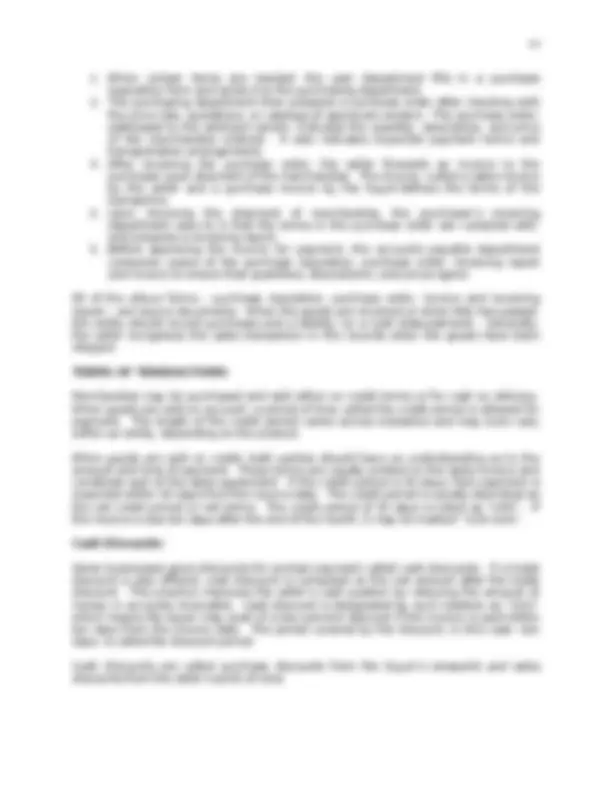
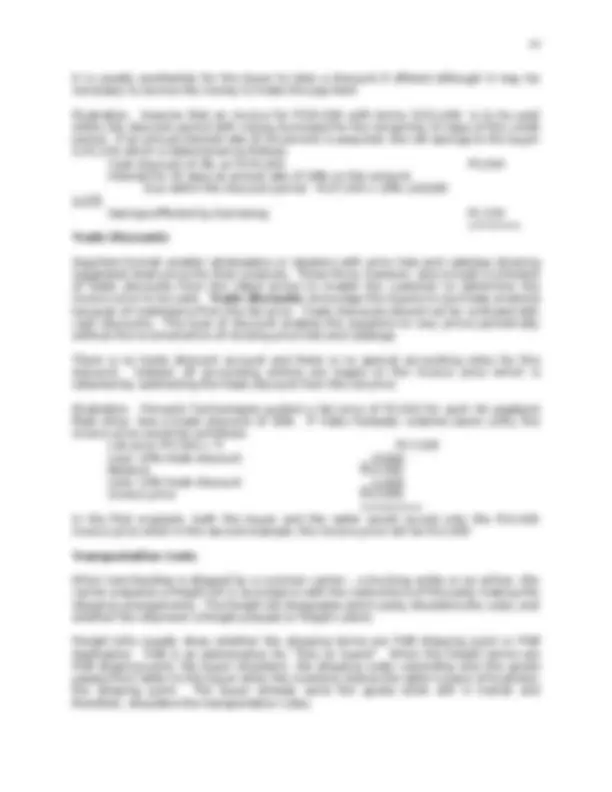
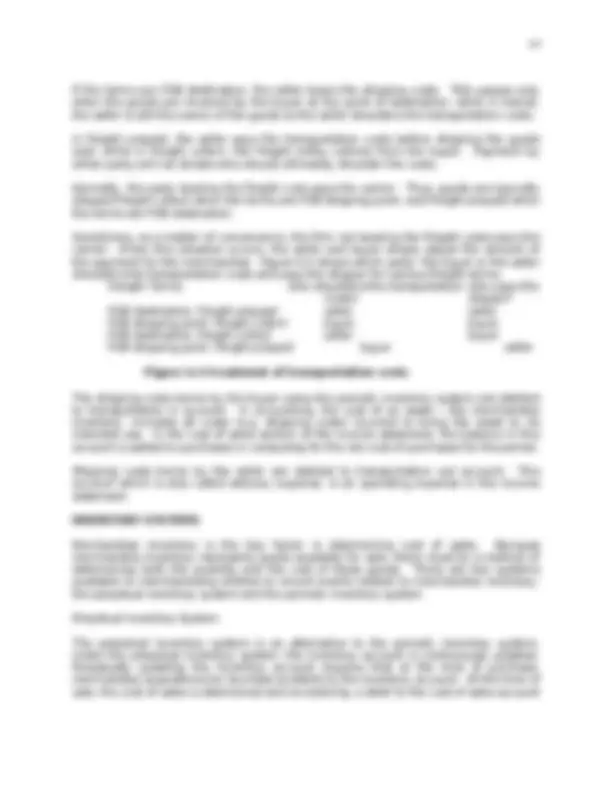
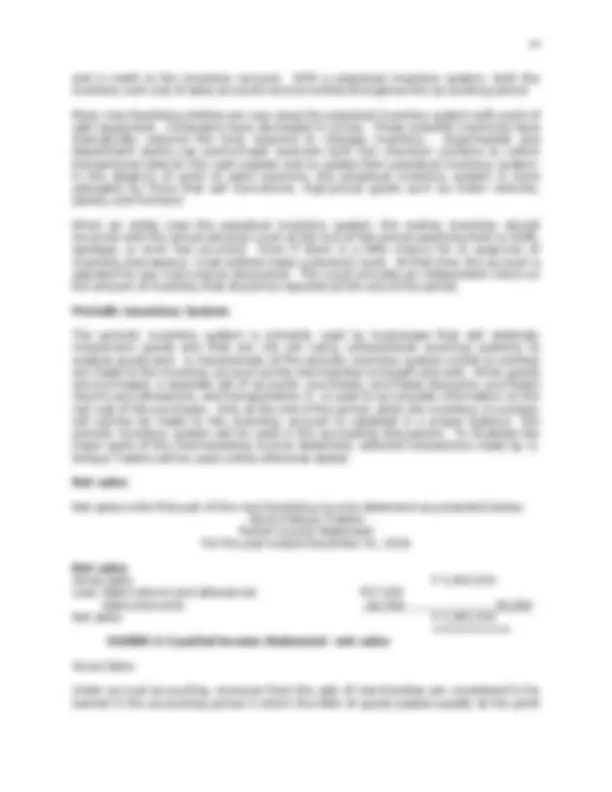
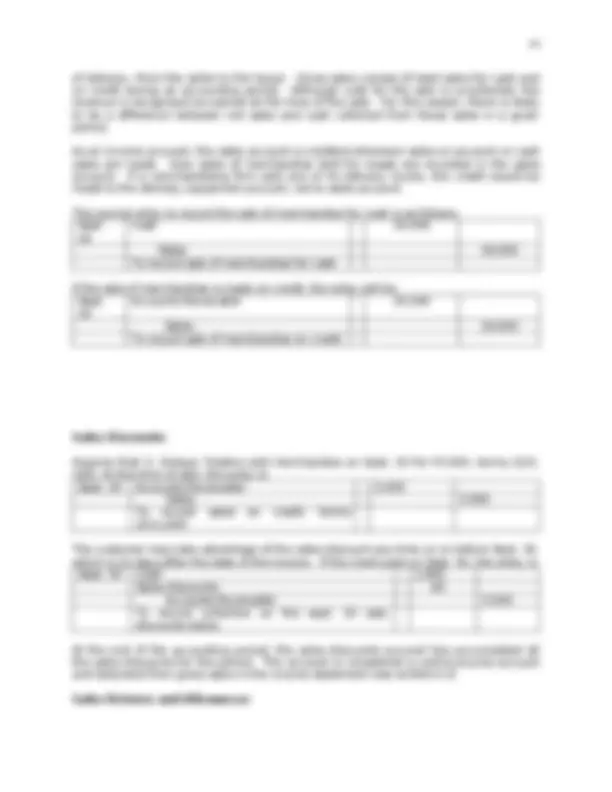
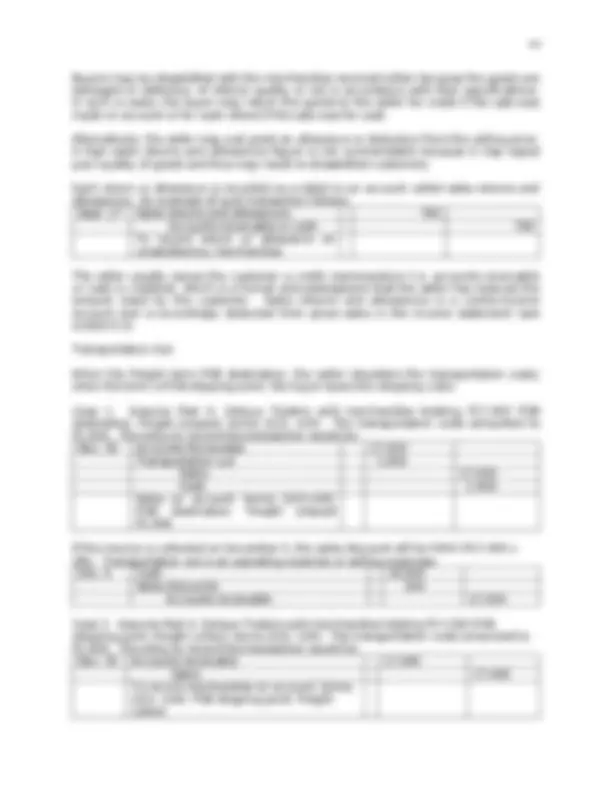
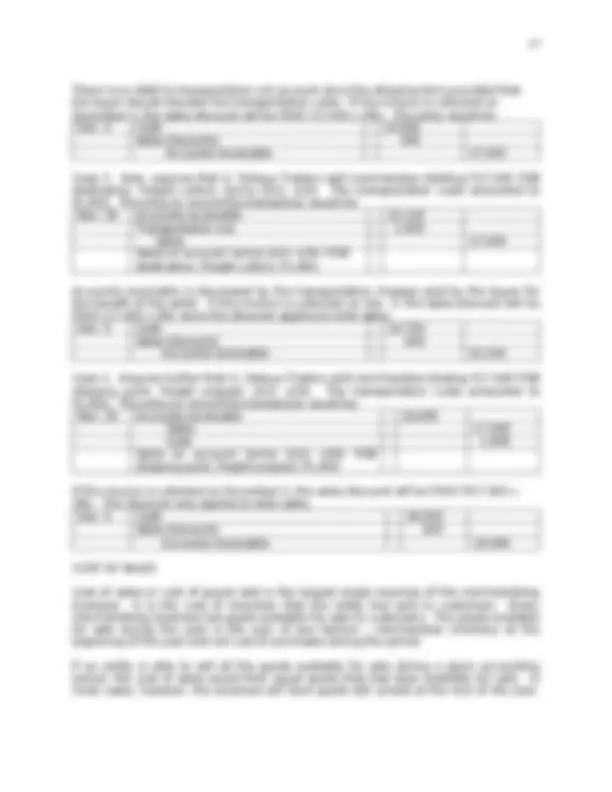
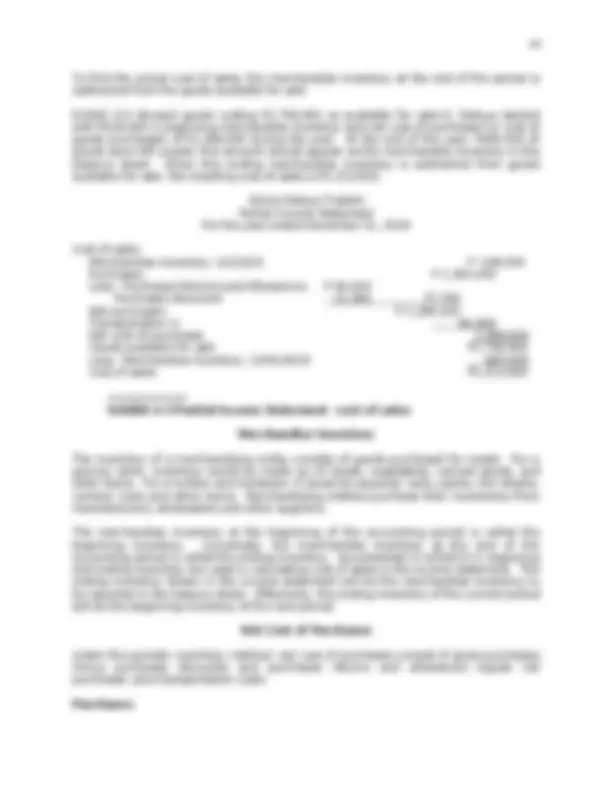
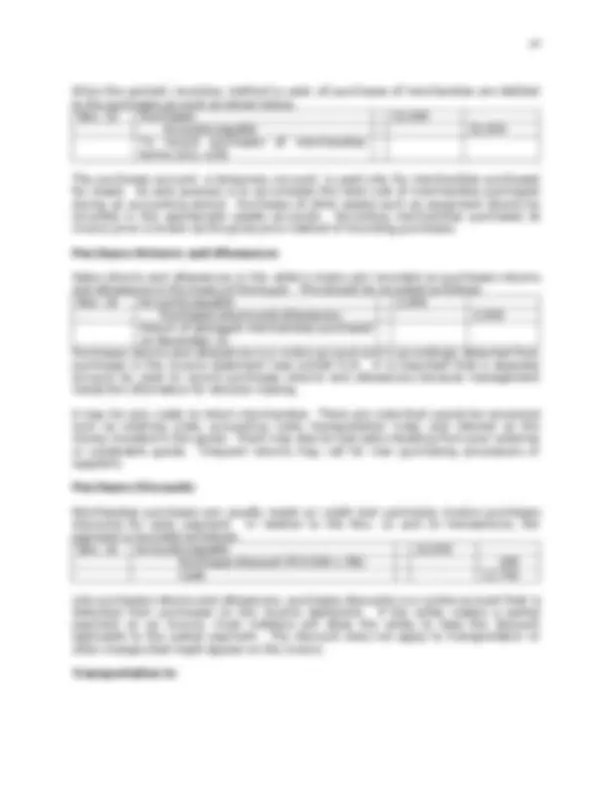
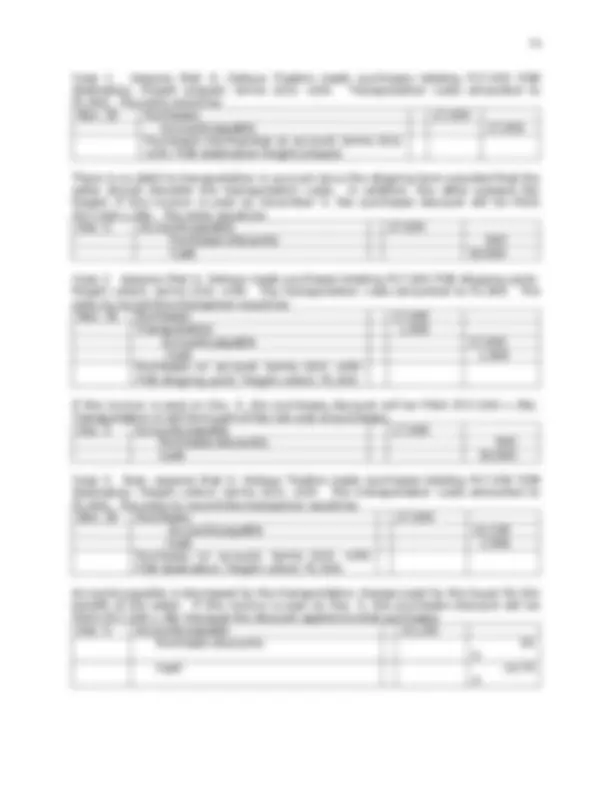
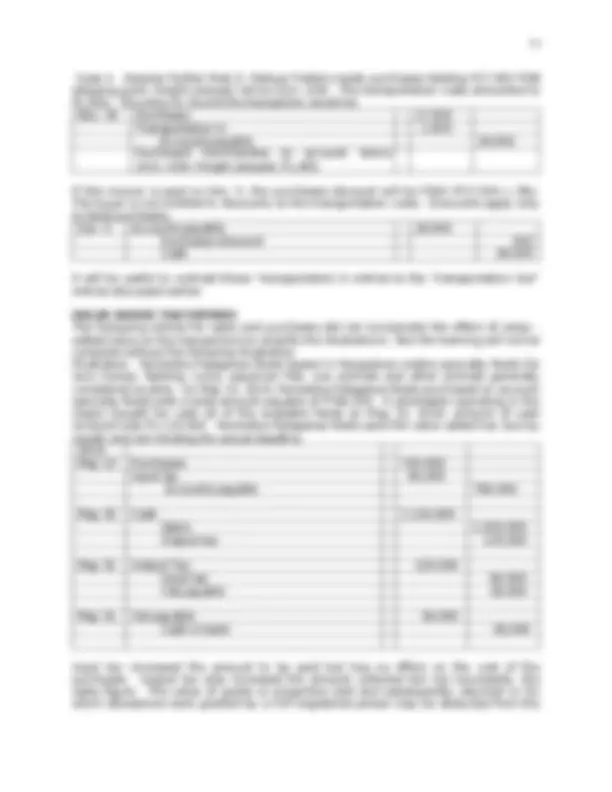
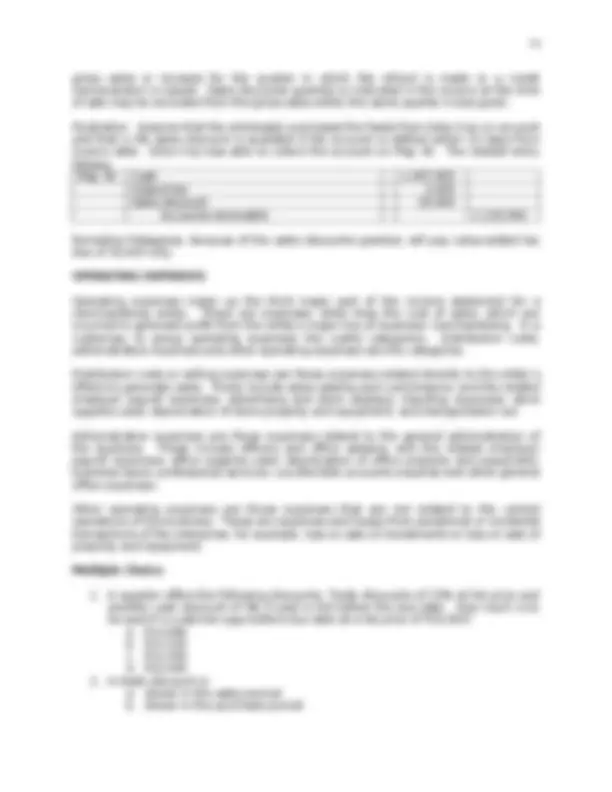
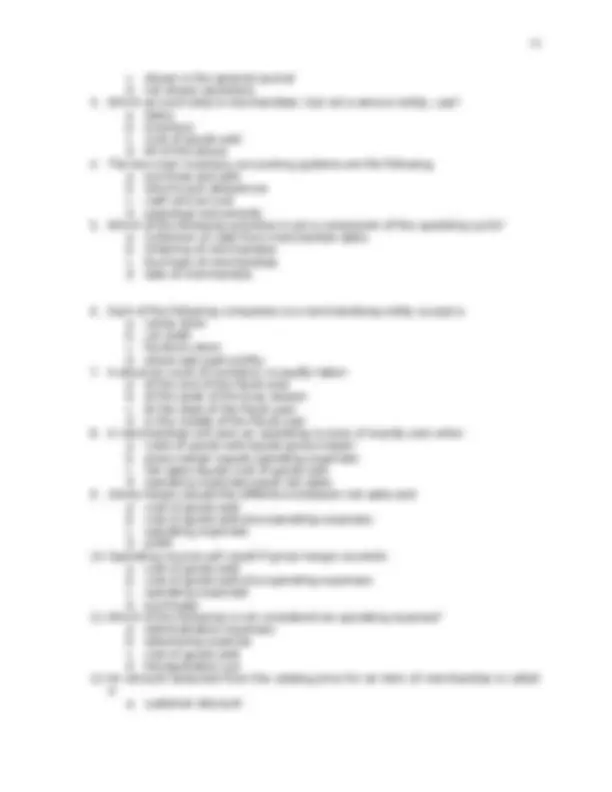
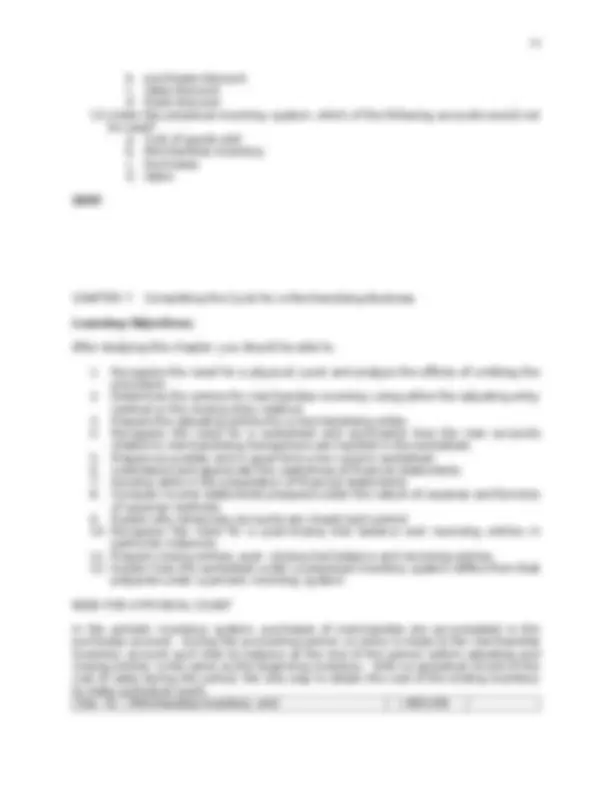
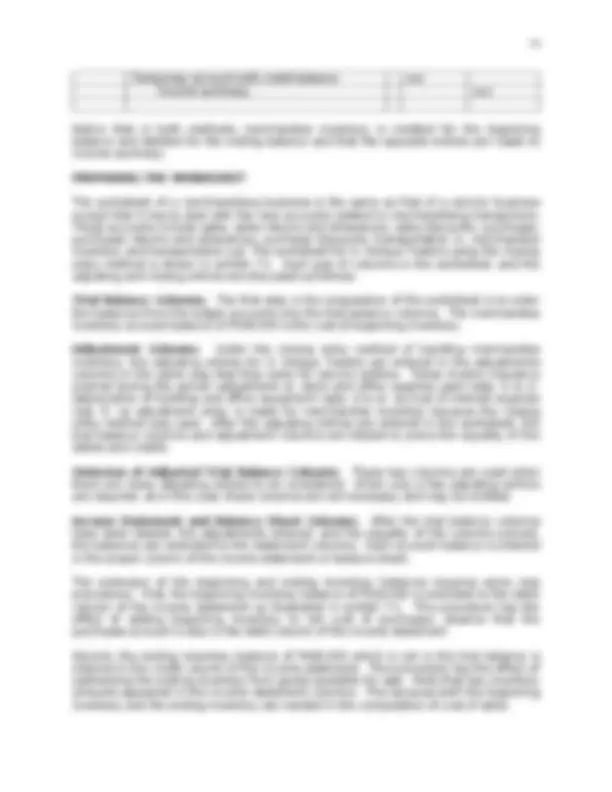
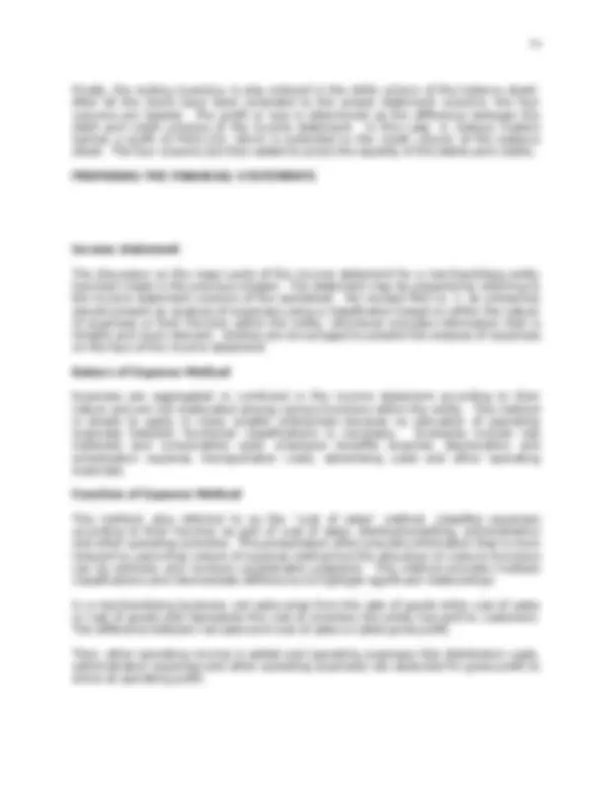
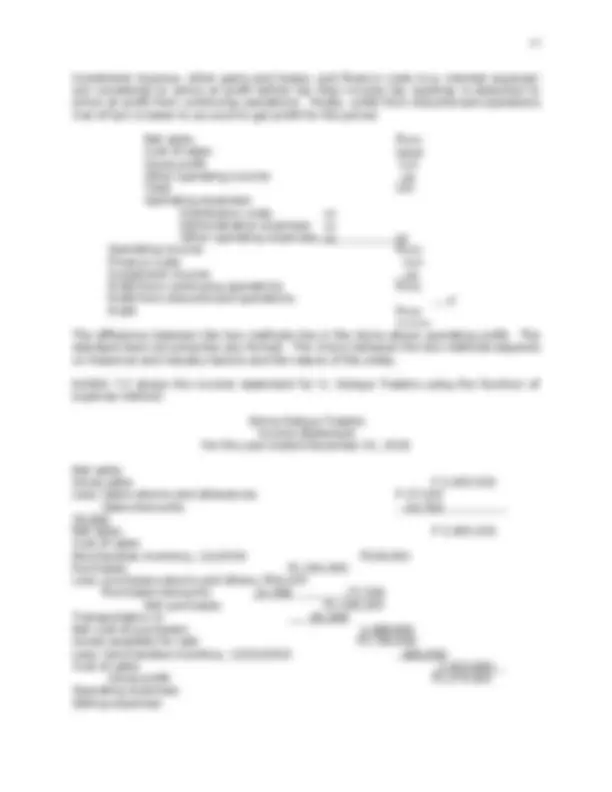
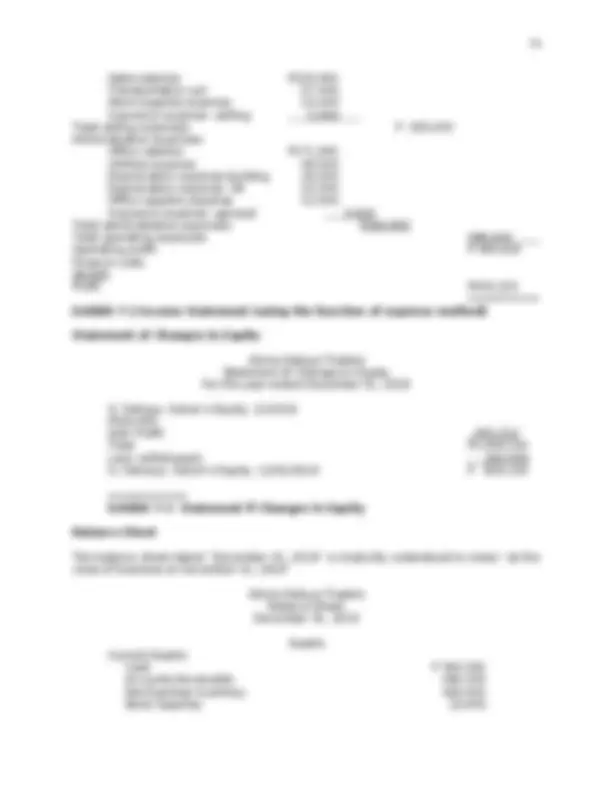
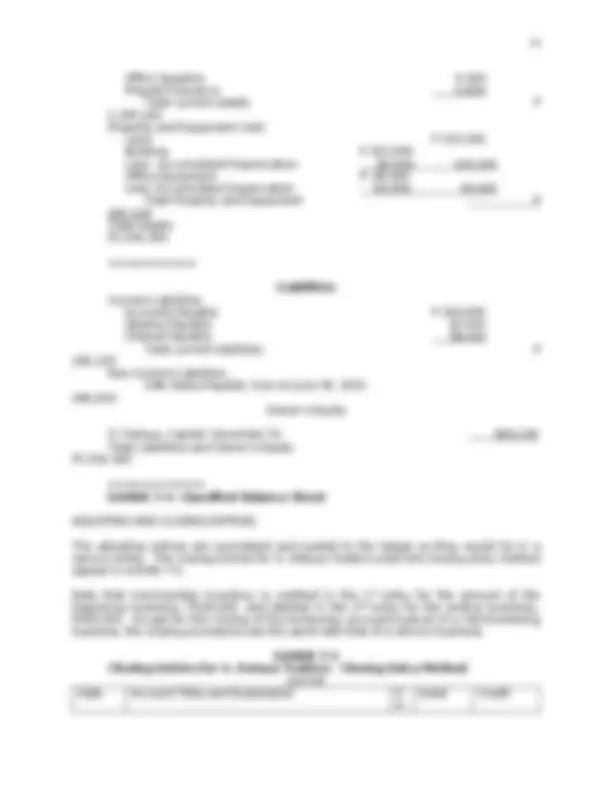
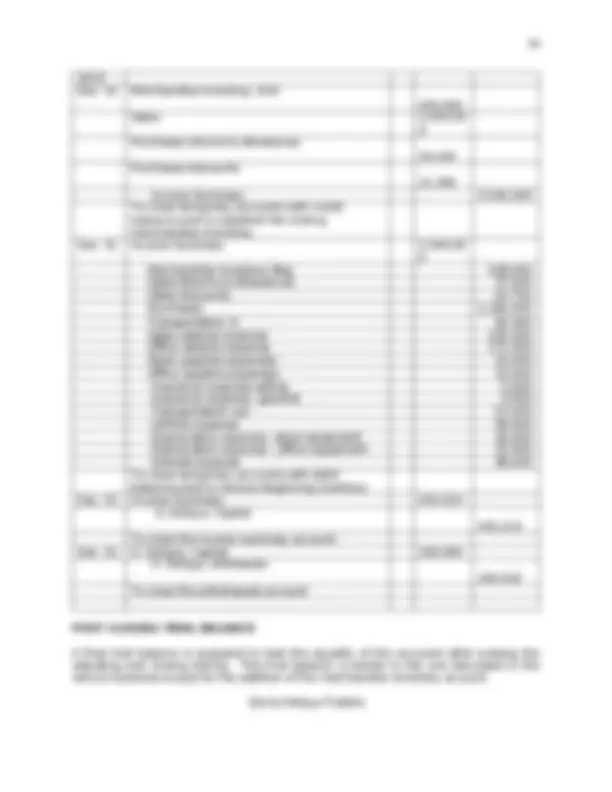
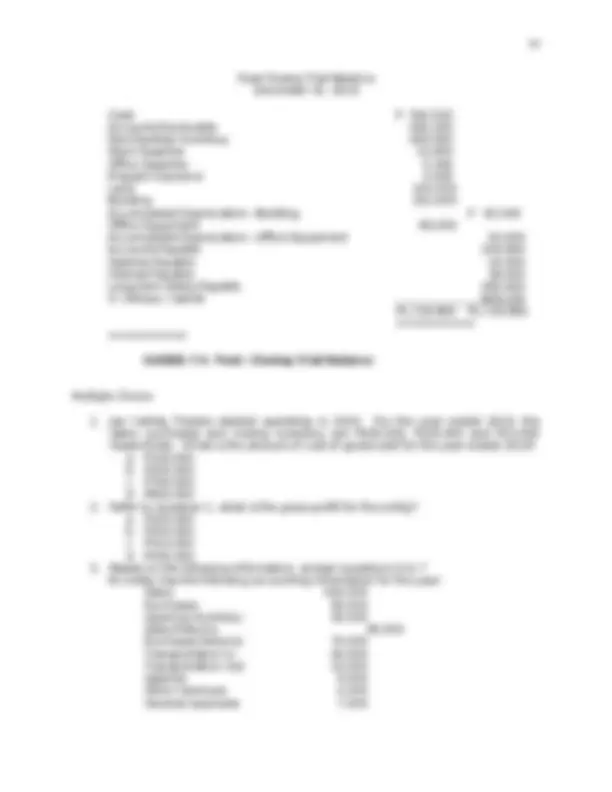
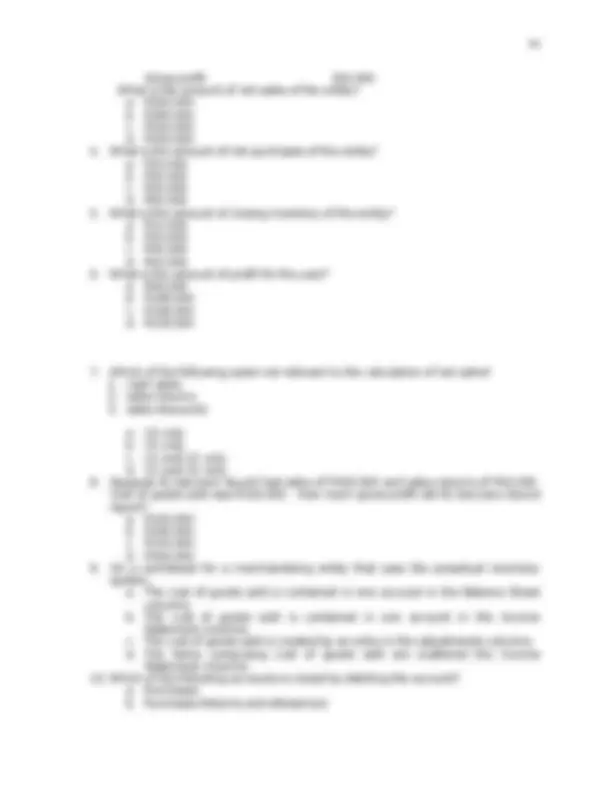
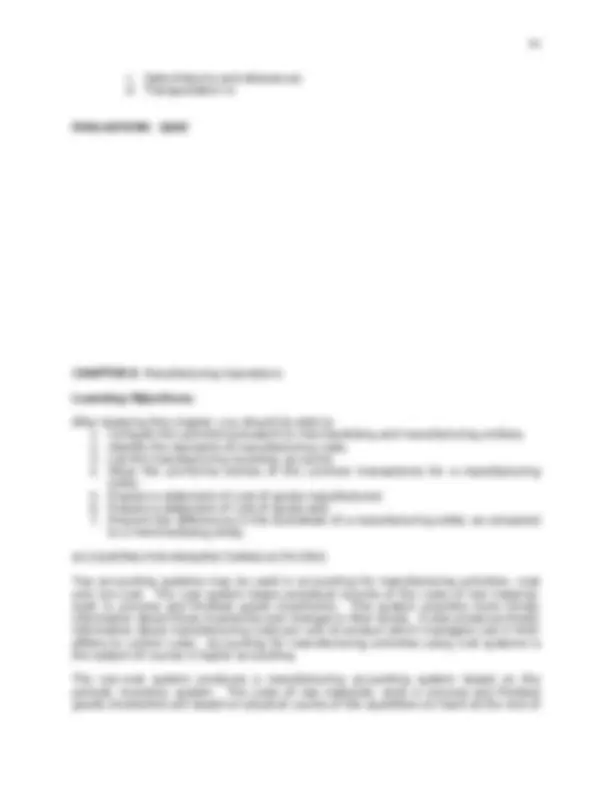
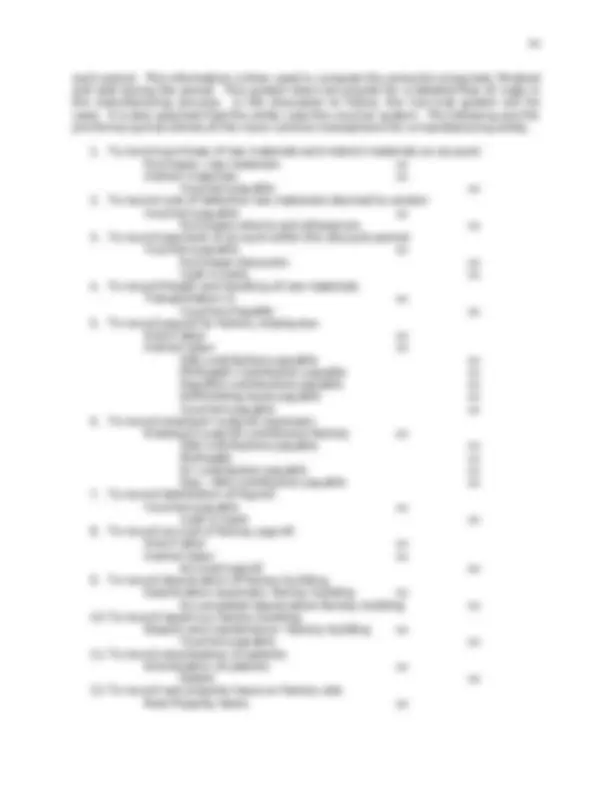
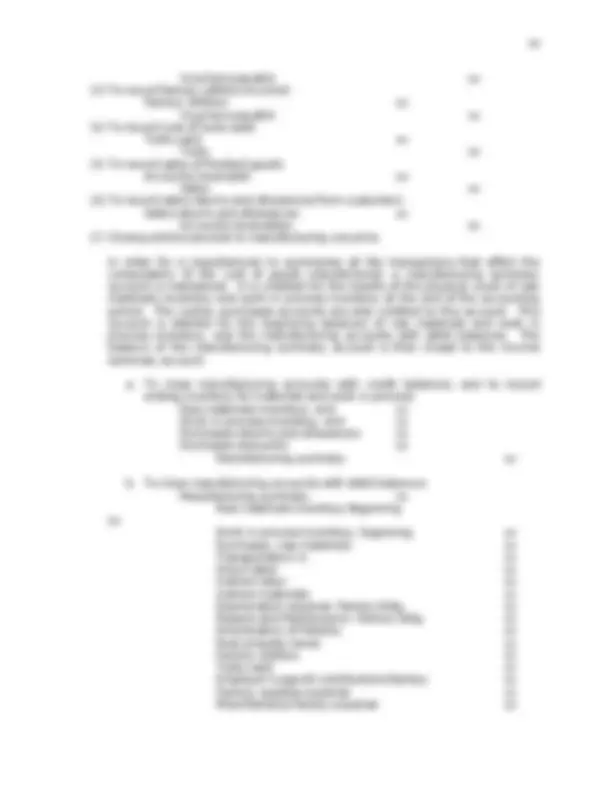
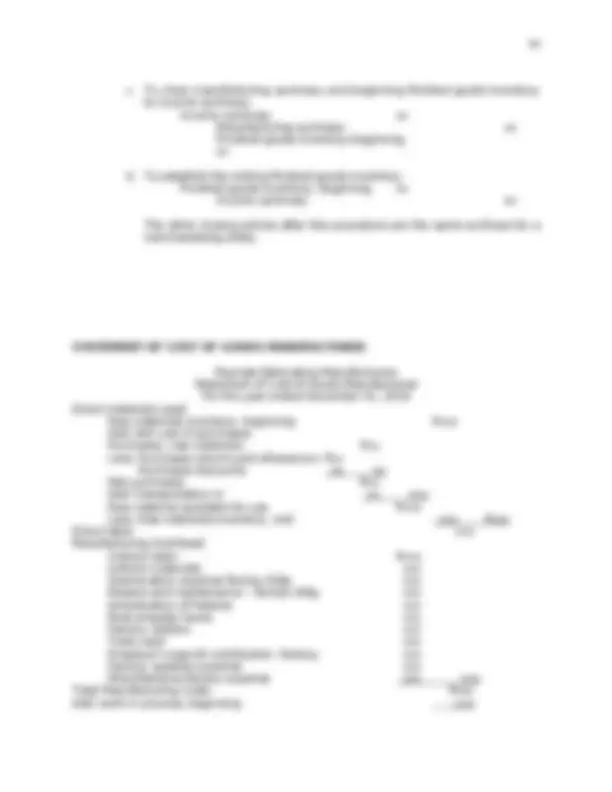
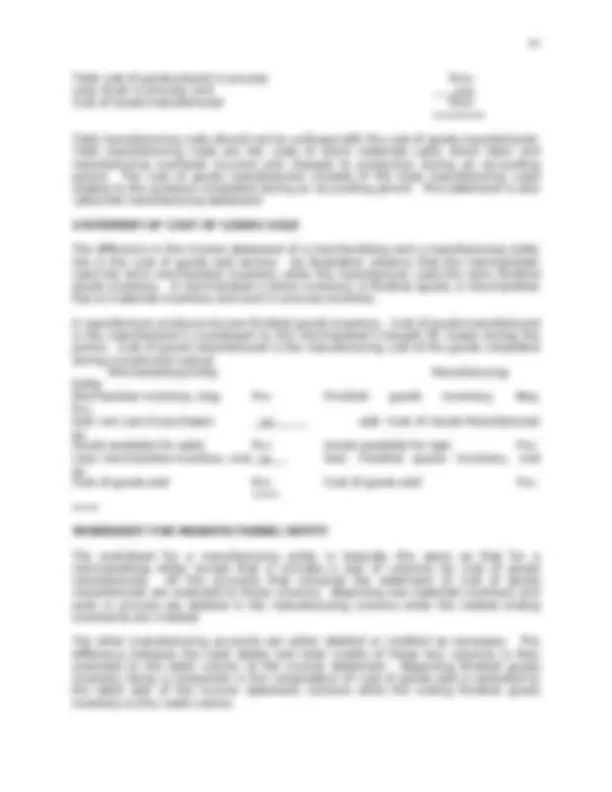
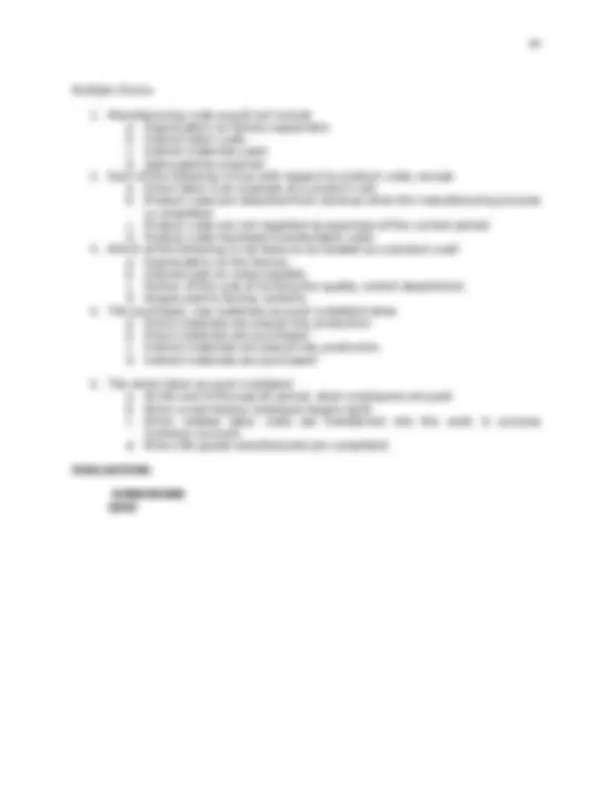
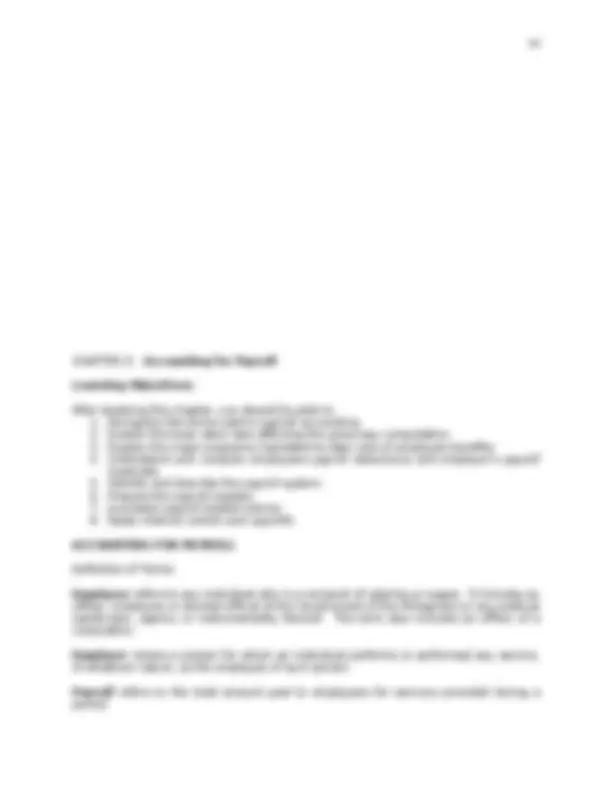
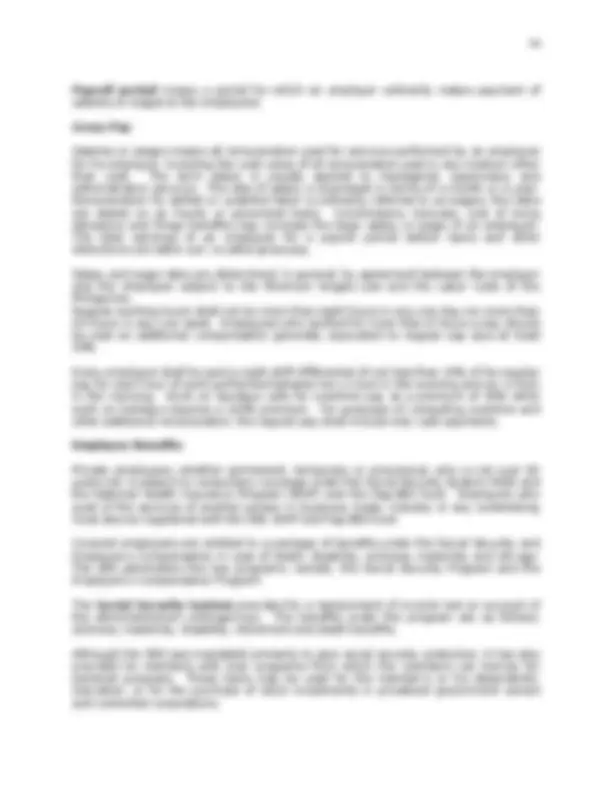
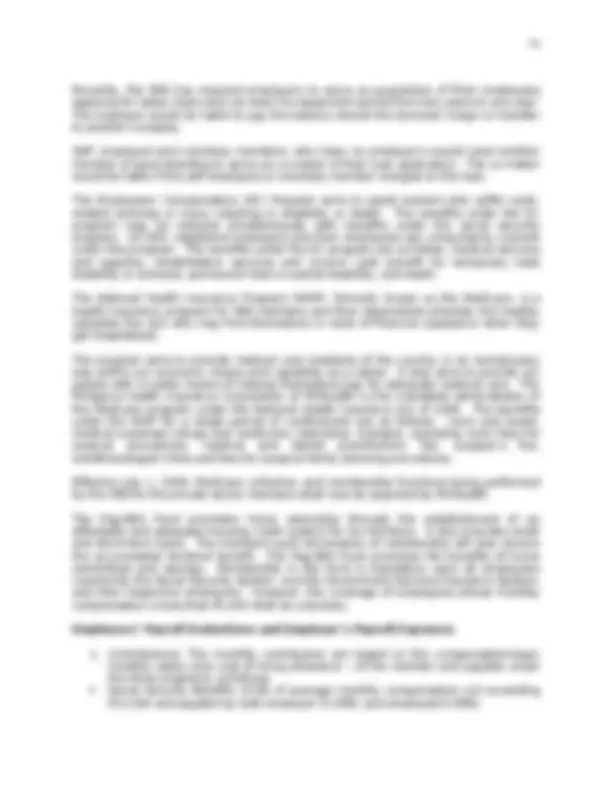
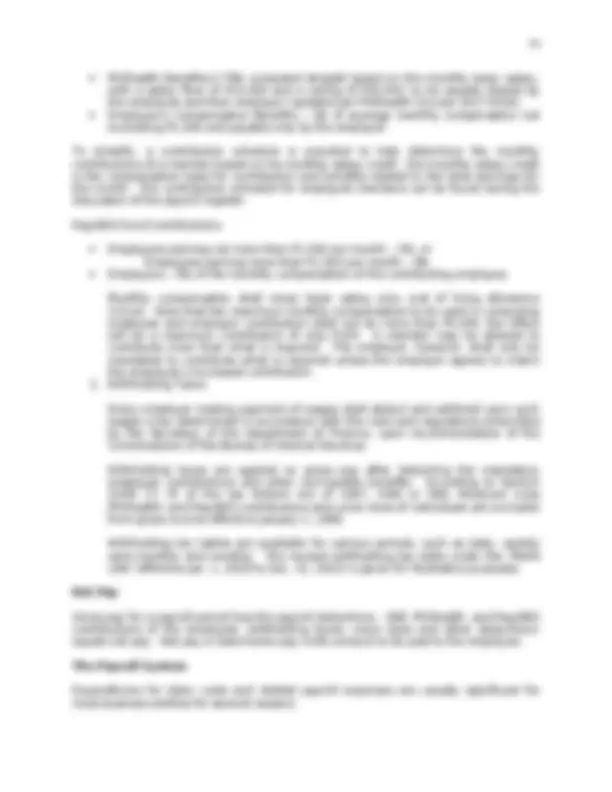
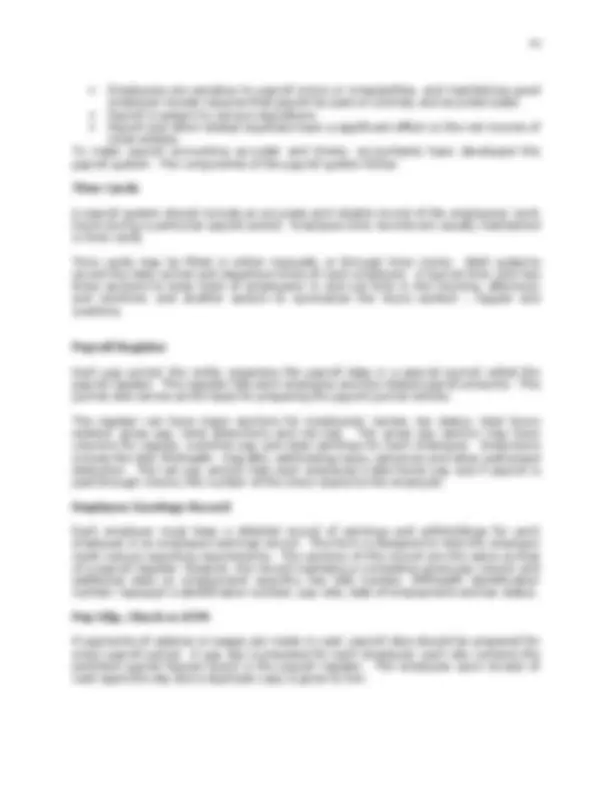
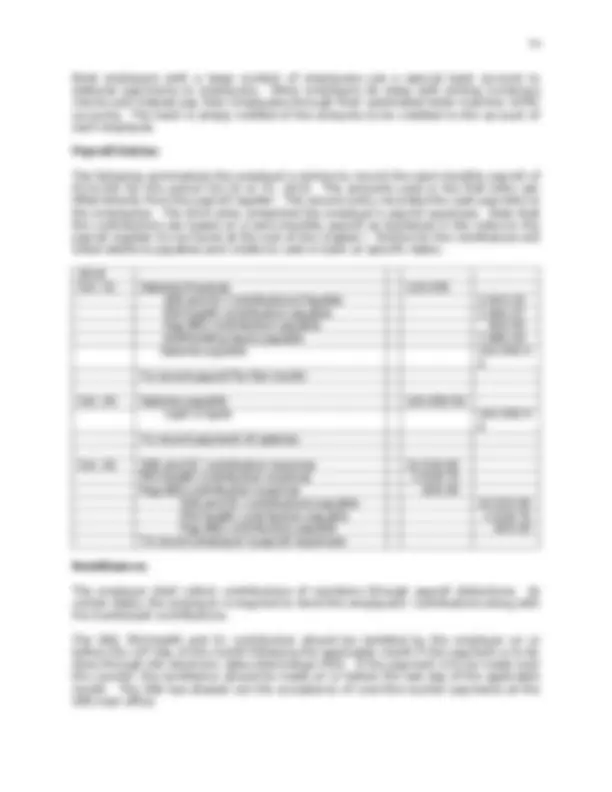
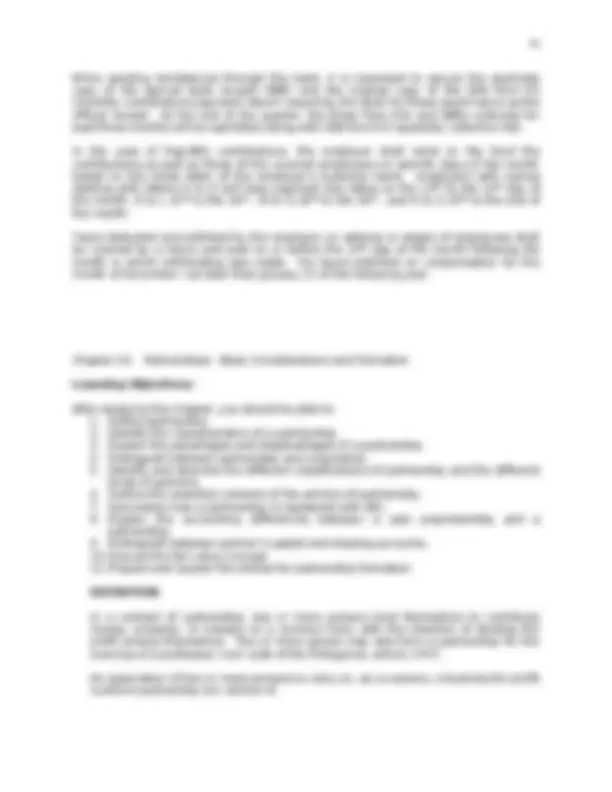
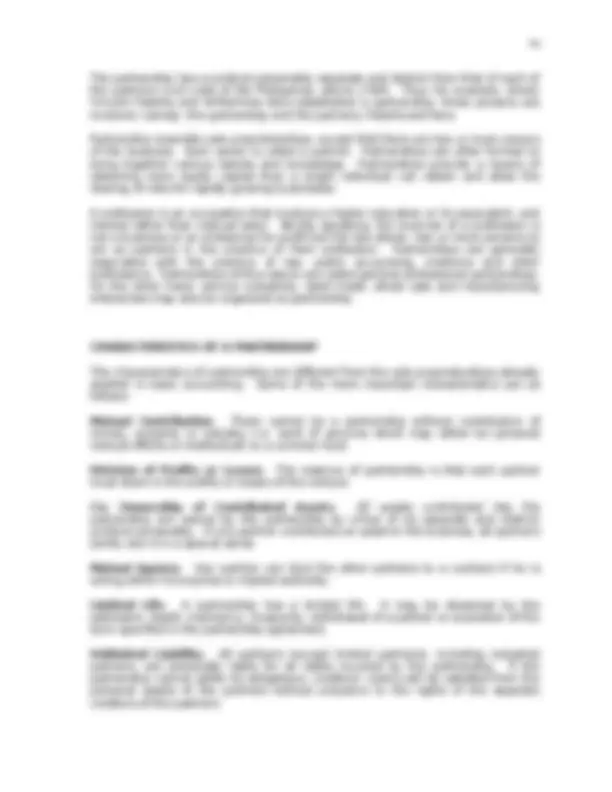
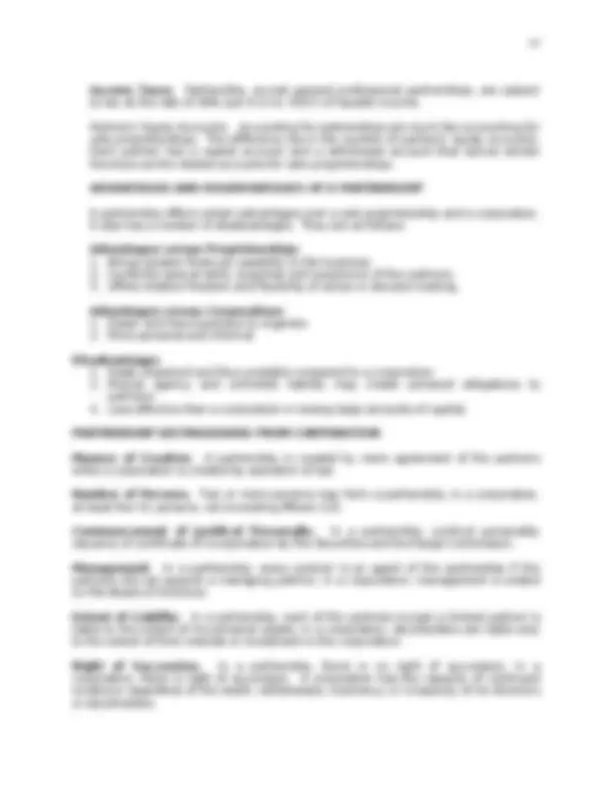
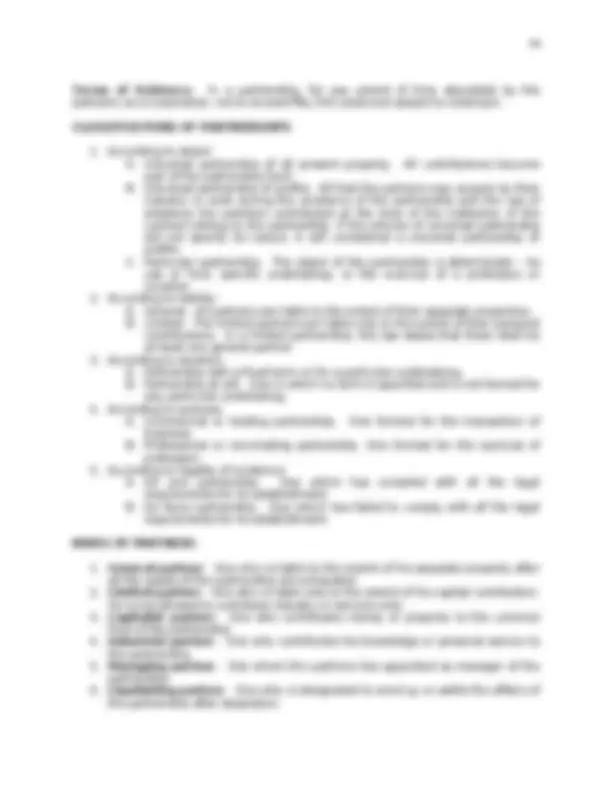
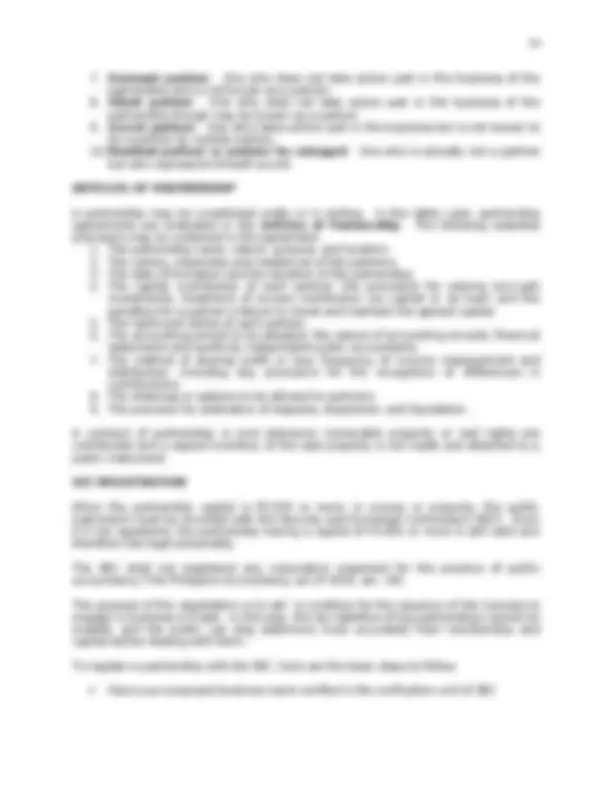
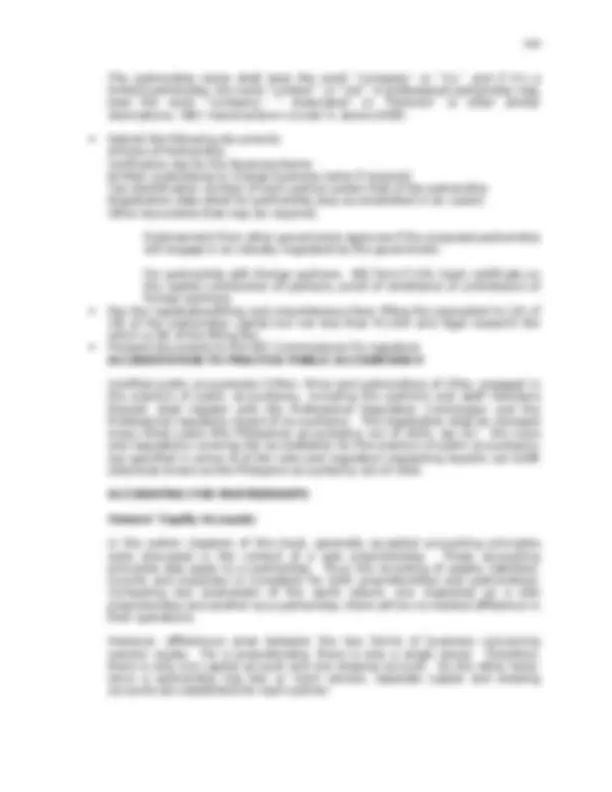


Study with the several resources on Docsity

Earn points by helping other students or get them with a premium plan


Prepare for your exams
Study with the several resources on Docsity

Earn points to download
Earn points by helping other students or get them with a premium plan
Community
Ask the community for help and clear up your study doubts
Discover the best universities in your country according to Docsity users
Free resources
Download our free guides on studying techniques, anxiety management strategies, and thesis advice from Docsity tutors
All chapters of the book Basic Accounting and Reporting. This document was based on ballada’s version
Typology: Study notes
1 / 162

This page cannot be seen from the preview
Don't miss anything!





























































































Accounting 1 Basic Financial Accounting & Reporting Learning Objectives: After studying this chapter, you should be able to:
Sole proprietorship. This business organization has a single owner called the proprietor who generally is also the manager. Sole proprietorships tend to be small service type (e.g. physicians, lawyers, and accountants) businesses and retail establishments. The owner receives all profits, absorbs all losses and is solely responsible for all debts of the business. Partnership. A partnership is a business owned and operated by two or more persons who bind themselves to contribute money, property, or industry to a common fund, with the intention of dividing the profits among themselves. Each partner is personally liable for any debt incurred by the partnership. Corporation. A corporation is a business owned by its stockholders. It is an artificial being created by operation of law, having the rights of succession and the powers, attributes and properties expressly authorized by law or incident to its existence. The stockholders are not personally liable for the corporation’s debts. FUNDAMENTAL CONCEPTS Several fundamental concepts underlie the accounting process. In recording business transactions, accountants should consider the following: Entity Concept. The most basic concept in accounting is the entity concept. An accounting entity is an organization or a section of an organization that stands apart from other organizations and individuals as a separate economic unit. Simply put, the transactions of different entities should not be accounted for together. Each entity should be evaluated separately. Periodicity Concept. An entity’s life can be meaningfully subdivided into equal time periods for reporting purposes. It will be aimless to wait for the actual last day of operations to perfectly measure the entity’s profit. This concept allows the users to obtain timely information to serve as a basis on making decisions about future activities. For the purpose of reporting to outsiders, one year is the usual accounting period. Stable Monetary Unit Concept. The Philippine peso is a reasonable unit of measure and that its purchasing power is relatively stable. It allows accountants to add and subtract peso amounts as though each peso has the same purchasing power as any other peso at any time. This is the basis for ignoring the effects of inflation in the accounting records. Going Concern Concept. Financial statements are normally prepared on the assumption that the reporting entity is a going concern and will continue in operation for the foreseeable future. Hence, it is assumed that the entity has neither the intention nor the need to enter liquidation or to cease trading. This assumption underlies the depreciation of assets over their useful lives. ELEMENTS OF FINANCIAL STATEMENTS
In a corporation, owners’ equity or stockholders’ equity consist of share capital, retained earnings and reserves representing appropriations of retained earnings among others. Financial Performance Income is increases in assets, or decreases in liabilities, that result in increases in equity, other than those relating to contributions from holders of equity claims. Expenses. Are decreases in assets, or increases in liabilities, that result in decrease in equity, other than those relating to distributions to holders of equity claims. THE ACCOUNT The basic summary device of accounting is the account. A separate account is maintained for each element that appears in the balance sheet (assets, liabilities and equity) and in the income statement (income and expenses). Thus, an account may be defined as a detailed record of the increases, decreases and balance of each element that appears in an entity’s financial statements. The simplest form of the account is known as the “T” account because of its similarity to the letter “T”. The account has three parts as follows. Account Title Debit side Left side Cred it side Righ t Side THE ACCOUNTING EQUATION Financial statements tell us how a business is performing. They are the final products of the accounting process. But how do we arrive at the items and amounts that make up the financial statements? The most basic tool of accounting is the accounting equation. This equation presents the resources controlled by the enterprise, the present obligations of the enterprise and the residual interest in the assets. It states that assets must always equal liabilities and owner’s equity. The basic accounting model is: Assets = Liabilities + Owner’s Equity Note that the assets are on the left side of the equation opposite the liabilities and owner’s equity. This explains why increases and decreases in assets are recorded in the opposite manner (“mirror image”) as liabilities and owner’s equity are recorded. The equation also explains why liabilities and owner’s equity follow the same rules of debit and credit.
Accounting is based on a double –entry bookkeeping system which means that the dual effects of a business transaction is recorded. A debit side entry must have a corresponding credit side entry. For every transaction, there must be one or more accounts debited and one or more accounts credited. Each transaction affects at least two accounts. The total debits for a transaction must always equal the total credits. An account is debited when an amount is entered on the left side of the account and credited when an amount is entered on the right side. The abbreviations for debit and credit are DR. and CR respectively. The account type determines how increases or decreases in it are recorded. Increases in assets are recorded as debits while decreases in assets are recorded as credits. Conversely, increases in liabilities and owner’s equity are recorded by credits and decreases are entered as debits. The rules of debit and credit for income and expense accounts are based on the relationship of these accounts to owner’s equity. Income increases owner’s and expense decreases owner’s equity. Hence, increases in income are recorded as credits and decreases as debits. Increases in expenses are recorded as debits and decreases as credit. These are the rules of debit and credit. The following summarizes the rules NORMAL BALANCE OF AN ACCOUNT The normal balance of any account refers to the side of the account- debit or credit- where increases are recorded. Assets owner’s withdrawal and expense accounts normally have debit balances; liability, owner’s equity and income accounts normally have credit balances. This result occurs because increases in an account are usually greater than or equal to decreases. Increases Recoded by Normal Balance Account Debit Credit Debit Credit Assets X X liabilities X X Owner’s equity Owner’s capital X X Withdrawals X X Income X X expenses X X ACCOUNTING EVENTS AND TRANSACTIONS An accounting event is an economic occurrence that causes changes in an enterprise’s assets, liabilities, and/or equity. Events may be internal actions, such as the use of equipment for the production of goods or services. It can also be an external event, such as the purchase of raw materials from a supplier. A transaction is a particular kind of event that involves the transfer of something of value between two entities.
equivalents. When the entity’s normal operating cycle is not clearly identifiable, it is assumed to be twelve months. Current assets Cash. Cash is any medium of exchange that a bank will accept for deposit at face value it includes coins, currency, checks, money orders, bank deposits and drafts. Cash equivalents. Per PAS no.7, these are short –term, highly liquid investments that are readily convertible to known amounts of cash and which are subject to an insignificant risk of changes in value. Notes receivable. A note receivable is a written pledge that the customer will pay the business a fixed amount of money on a certain date. Accounts receivable. These are claims against customers arising from sale of services or goods on credit. This type of receivable offers less security than a promissory note. Inventories. Per PAS no. 2, these are assets which are (a) held for sale in the ordinary course of business; (b) in the process of production for such sale; or (c) in the form of materials or supplies to be consumed in the production process or in the rendering of services. Prepaid expenses. These are expenses paid for by the business in advance. It is an asset because the business avoids having to pay cash in the future for a specific expense. These include insurance and rent. These prepaid items represent future economic benefits- assets – until the time these start to contribute to the earning process; these, then, become expenses. Non –current assets Property, Plant, and Equipment. Per PAS no. 16, these are tangible assets that are held by an enterprise for use in the production or supply of goods or services, or for rental to others, or for administrative purposes and which are expected to be used during more than 1 period. Included are such items as land, building, machinery and equipment, furniture and fixtures, motor vehicles and equipment. Accumulated depreciation. It is a contra assets account that contains the sum of the periodic depreciation charges. The balance in this account is deducted from the cost of the related assets- equipment or buildings – to obtain book value. Intangible Assets. Per PAS no. 38. These are identifiable, nonmonetary assets without physical substance held for use in the production or supply of goods or services, for rentals to others, or for administrative purposes. These include goodwill, patents, copyrights, licenses, franchises, trademarks, brand names, secret processes, subscription list, and non-competition agreements. Liabilities Per revised Philippine Accounting Standards (PAS) no. 1, an entity shall classify a liability as current when : a. it expects to settle the liability in its normal operating cycle;
b. it holds the liability primarily for the purpose of trading; c. the liability is due to be settled within twelve months after the reporting period; or d. The entity does not have an unconditional right to defer settlement of the liability for at least twelve months after the reporting period. All other liabilities should be classified as non-current liabilities. Current Liabilities Accounts payable. This account represents the reverse relationship of the accounts receivable. By accepting the goods or services, the buyer agrees to pay for them in the near future. Notes payable. A note payable is like a note receivable but in a reverse sense. In the case of a note payable, the business entry is the maker of the note; that is, the business entity is the party who promises to pay the other party a specified amount of money on a specified future date. Accrued Liabilities. Amounts owed to others for unpaid expenses. This account includes salaries payable, utilities payable, interest payable and taxes payable. Unearned Revenues. When the business entity receives payment before providing its customers with goods or services, the amounts received are recorded in the unearned revenue account (liability method). When the goods or services are provided to the customer, the unearned revenue is reduced and income is recognized. Current portion of long-term debt. These are portions of mortgage notes, bonds and other long-term indebtedness which are to be paid within one year from the balance sheet date. Non –current liabilities Mortgage Payable. This account records long-term debt of the business entity for which the business entity has pledged certain assets as security to the creditor. In the event that the debt payments are not made, the creditor can foreclose or cause the mortgaged asset to be sold to enable the entity to settle the claim. Bonds Payable. Business organization often obtain substantial sums of money from lenders to finance the acquisition of equipment and other needed assets. They obtain these funds by issuing bonds. The bond is a contract between the issuer and the lender specifying the terms of repayment and the interest to be charged. Owner’s Equity Capital (from the Latin capitalist, meaning “property”). This account is used to record the original and additional investments of the owner of the business entity. It is increased by the amount of profit earned during the year or is decreased by a loss. Cash or other assets that the owner may withdraw from the business ultimately reduce it. This account title bears the name of the owner.
Financial Transaction Worksheet Every financial transaction can be analyzed or expressed in terms of its effects on the accounting equation. The financial transactions will be analyzed by means of a financial transaction worksheet which is a form used to analyze increases and decreases in the assets, liabilities or owner’s equity of a business entity. Illustration. Galicano Del Mundo decided to establish a sole proprietorship business and named it as Del mundo Graphics Design. Del Mundo is a graphic designer who has extensive experience in drawing, layout, typography, lettering, diagramming, and photography. He possesses the talent to visually communicate to a target audience with the right combination of words, images and ideas. Del Mundo Graphics Design can do the layout and production design of newspapers, magazines, corporate reports, journals and other publications. The entity can create promotional displays; marketing brochures for services and product; packaging design for products; and distinctive logos for businesses. He also enters into agreements with clients for the progressive development and maintenance of their web sites. His initial revenue stream comes from web designing. The owner, Galicano Del Mundo, makes the business decisions. The assets of the company belong to Del Mundo and all obligations of the business are his responsibility. Any income that the entity earns belongs solely to Del Mundo. When a specific asset, liability or owner’s equity item is created by a financial transaction, it is listed in the financial transaction worksheet using the appropriate accounts. The worksheet that follows shows the first transaction of the Del Mundo Graphics Design. The dates are enclosed in parentheses. During March 2019, the first month of operations, various financial transactions took place. These transactions are described and analyzed as follows. Mar. 1 Del Mundo started his new business by depositing P350,000 in a bank account in the name of Del Mundo Graphics Design at BPI Poblacion Branch. Del Mundo Graphics Design Financial transaction worksheet Month of March 2019 Assets = liabilities + Owner’s Equity Cash Del Mundo, Capital (1) P350,000 = P350, ======= ======== The financial transaction is analyzed as follows: An entity separate and distinct from Del Mundo’s personal financial affairs is created. An economic resource – cash of P350,000 is invested in the business entity. The source of this asset is the contribution made by the owner, which represents owner’s equity. The owner’s equity account is Del Mundo, Capital.
The dual nature of the transaction is that cash is invested and owner’s equity created. The effects on the accounting equation are as follows: Increase in asset
clients did not pay immediately. Performing the services creates an economic resource, the client’s promise to pay the amount which is called accounts receivable. This transaction resulted to an increase in asset- accounts receivable and an increase in owner’s equity of P35,000. Mar. 19 Del Mundo made a partial payment of P17,000 for the March 9 purchase on account. Assets = L + OE Cash + accounts + computer + computer accounts
A = l + OE Cash + accounts + computer + computer= accounts + Del Mundo, Receivable supplies equipment payable capital Bal. P258,000 P35,000 P25,000 P145,000 = P8, P455, (20) 25,000 (25,000) P283,000 +P10,000 + P25,000 + P145,000 = P8,000 + P455,000 P463,000 = P463, ======== ======== Last March 17, Del Mundo billed clients for services already rendered. On March 20, the entity was able to collect P25,000 from them. The asset- cash is increased by P25,000. The business should not record service income on March 20 since it has already recorded the income last March
Bal. P283,000 P10,000 P25,000 P145,000 P8, P455, (21) (20,000) = (20,000) P263,000 + P10,000 + P25,000 + P145,000 = P8,000 + P435, P443,000 = P443, ========= = ======== Withdrawal of cash or other assets for personal use is the by which the owner of the entity receives advance distribution of the profits. On March 1, Del Mundo invested P350,000; both cash and owner’s equity increased. The transaction was an investment by the owner and not an income- generating activity. Del Mundo simply transferred funds from his personal account to the business. A cash withdrawal is exactly the opposite. The P20,000 cash withdrawal transaction resulted to a reduction in both cash and owner’s equity. Mar. 27 Warlito Blance Publishing submitted a bill to Del Mundo for P8,000 worth of newspaper advertisements for this month. Del Mundo will pay this bill next month. A = L + OE Cash + accounts + Computer + computer = Accounts + Del Mundo, Receivable supplies equipment = payable capital Bal. P263,000 P10,000 P25,000 P145,000 = P8, P435, (27) = P8,000 (P8,000) P263,000 + P10,000 + P25,000 + P145,000 = P16,000 + P427, P443,000 = P443, ======== ======== Warlito Blance rendered services on account. Del Mundo Graphics Design has incurred an expense in the amount of P8,000 by availing of Warlito Blance’s services. There was no payment during the month. This advertising expense resulted to a decrease in owner’s equity and an increase in the liability – accounts payable. Mar. 31 Del Mundo paid his assistant designer salaries of P15,000 for the month. A = L + OE Cash + accounts + computer + computer = accounts Del Mundo, Receivables supplies equipment payable capital Bal. P263,000 P10,000 P25,000 P145,000 = P16, P427, (31) (15,000) = (15,000) P248,000 + P10,000 + P25,000 + P145,000 = P16,000 + P412, P428,000 = P428, ======== ========
When three or more accounts are required in a journal entry, the entry is referred to as a compound entry. TRANSACTIONS ARE JOURNALIZED (step 2) After the transaction or event has been identified and measured, it is recorded in the journal. The process of recording a transaction is called journalizing. The following are the transactions for Wedding “R” Us during the month of May. The double – entry system will be used. To understand the nature of the affected accounts, the letter A (for asset), L (liability) or OE (owner’s Equity) is inserted after each entry. In addition, owner’s equity is further classified into OE: I (income) and OE: E (expenses) Note that the rule of double – entry system are observed in each transaction:
May 2 Maria Concepcion Jennifer Perez-Manalo issued a promissory note for a P210,000 loan from Metrobank. This availment will be used for the acquisition of a service vehicle. The note carries a 20% interest per annum. The arrangement with the bank is that both the interest and the principal are payable in full in one year. Analysis assets increased. Liabilities increased. Entry Increase in assets is recorded by a debit to cash. Increase in liabilities is recorded by a credit to notes payable. Debit Credit Cash (A) 210, Notes payable (L) 210, May 2 Hired an office assistant and an account executive each with a P7, monthly salary. Or, each is to receive P300 per day for the 26-day work month. No entry is necessary at this point. They started work immediately. Service Vehicle Acquired for Cash (exchange of assets) May 4 Acquired service vehicle for P420,000. Analysis Assets increased. Assets decreased. Entry Increase in assets is recorded by a debit to service vehicle. Decrease in assets is recorded by a credit to cash. Debit Credit Service vehicle(A) 420, Cash (A) 420, Insurance Premiums Paid (exchange of assets) May 4 Paid Prudential Guarantee and Assurance, Inc. P14,400 for a one-year comprehensive insurance coverage on the service vehicle. Analysis An asset increased. Another assets decreased. Entry Increase in assets is recorded by a debit to prepaid insurance. Decrease in assets is recorded by a credit to cash. Debit Credit Prepaid Insurance (A) 14, Cash (A) 14, Office Equipment Acquired on Account (exchange and source of assets) May 5 Acquired office equipment from fair and Square Emporium for P60,000; paying P15,000 in cash and the balance next month. Note: A compound entry is needed for this transaction.